On the fifth day after the loon chicks hatched, I woke with the rising of the sun, grabbed my camera bag and walked to the lake. I unlocked my kayak and dragged it into the water. Climbing inside, I dipped my paddle in the water first on the left, then on the right.
I couldn’t wait to see the chicks again!
As I scanned the lake for the loon family, I heard the unmistakable call of a flying loon.
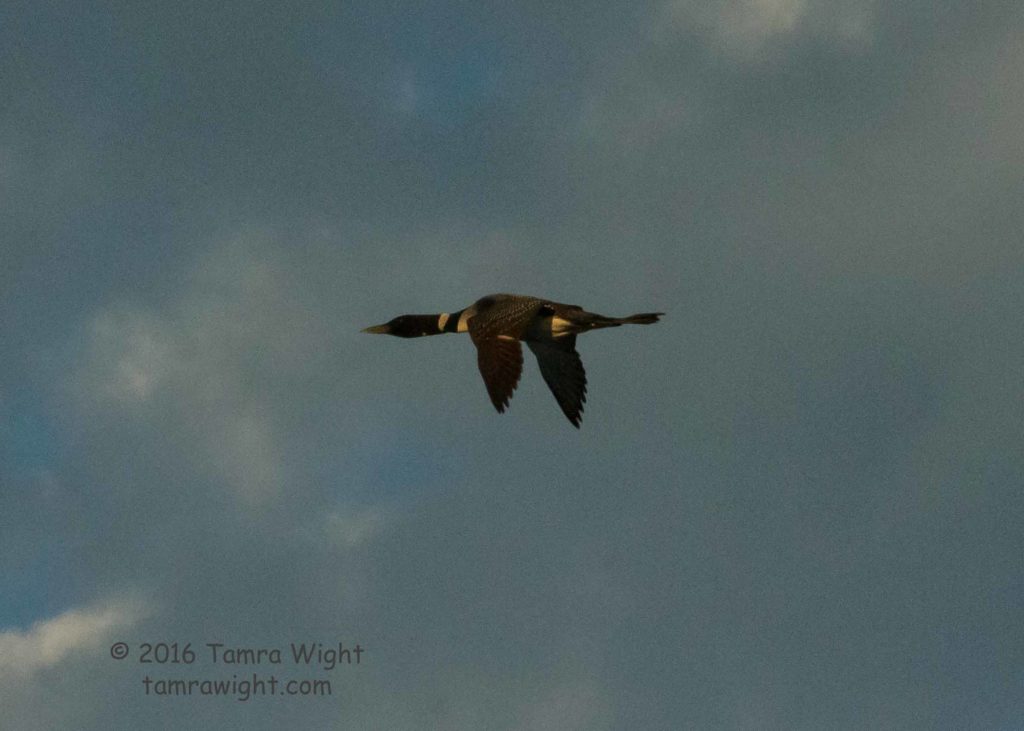
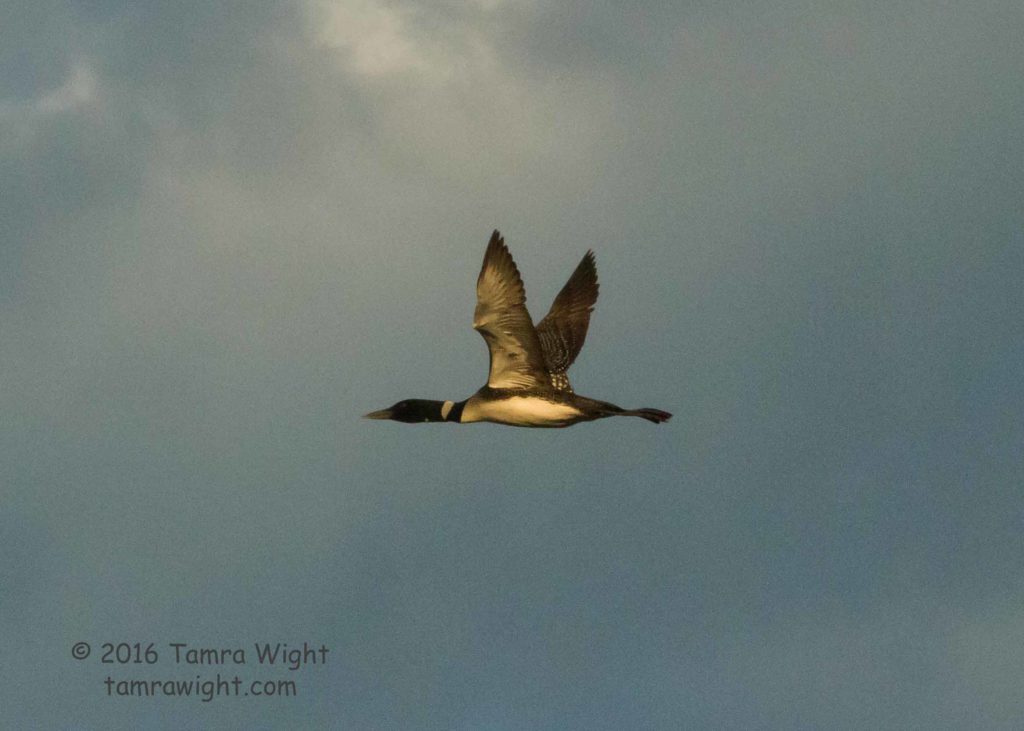
It went down the left side of the lake, then circled back around to fly over my head again and continue down the right side.
The strange thing was, in the distance, I saw two adult loons with the chicks.
What was this one doing here? Loons usually don’t put up with visitors in their territory while they’re raising their chicks.
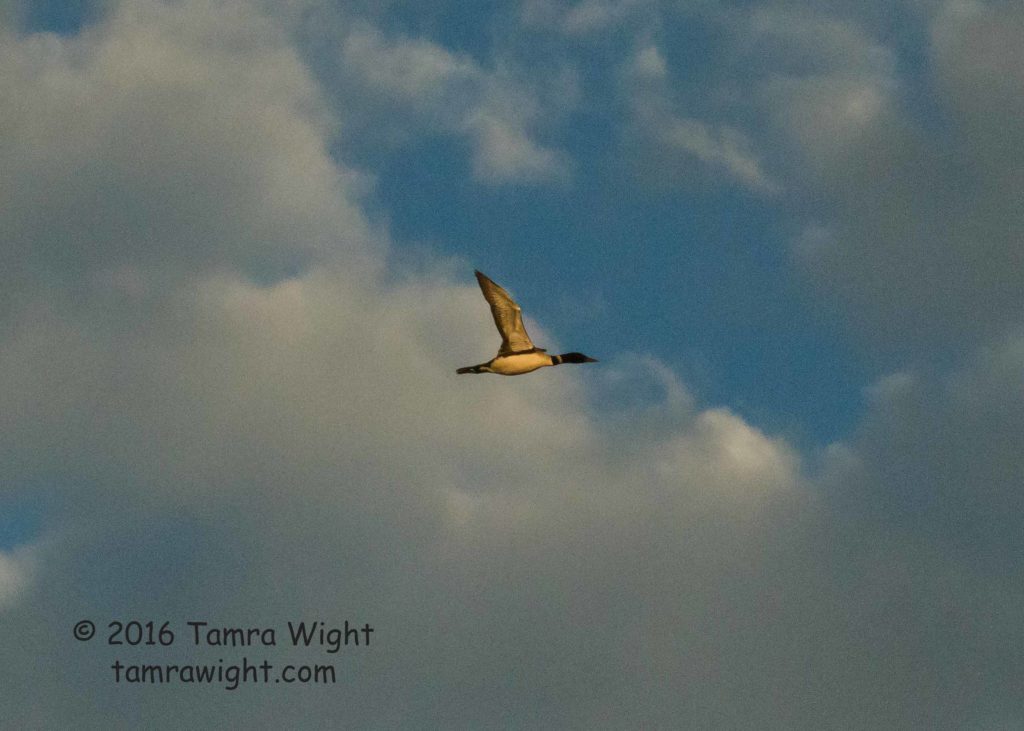
I slowly approached the loon family, who were only a couple hundred yards off our point. Right away I noticed there was something different.
Only one chick.
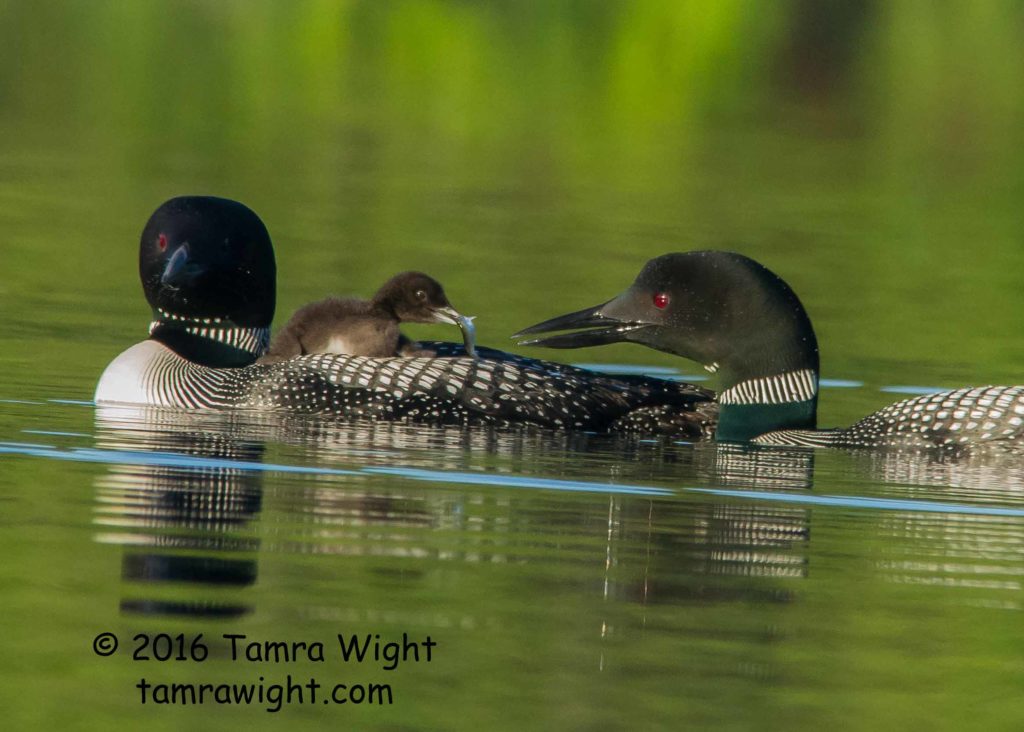
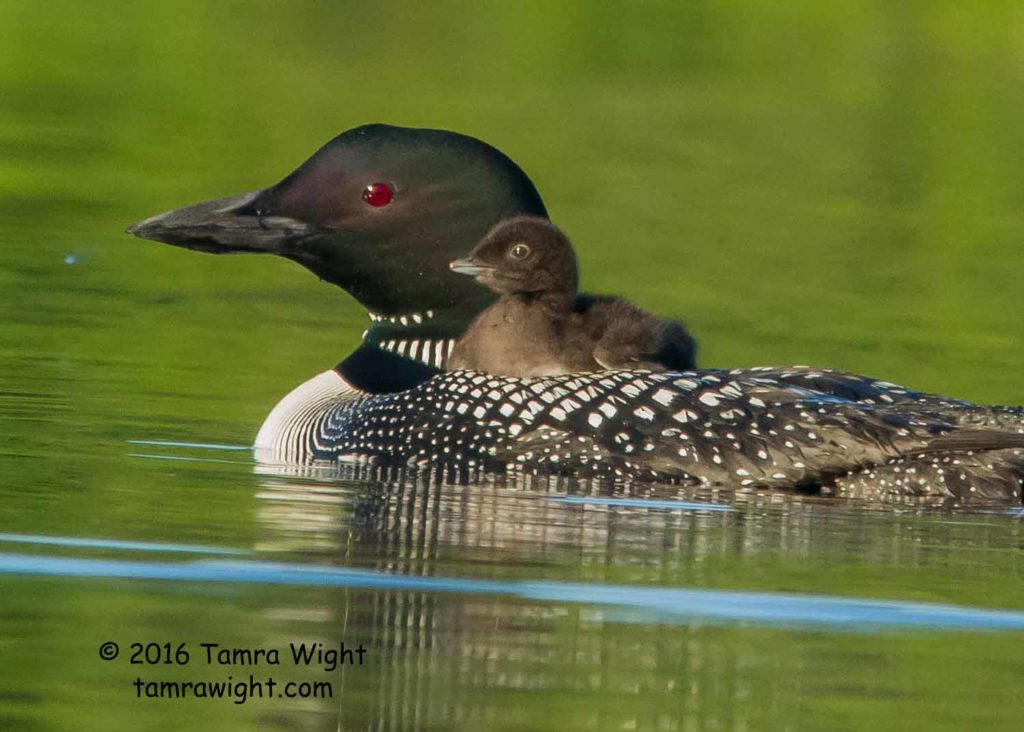
My heart sank. Where was the second one? But then I remembered how the second chick had been hiding under its parent’s wing the last time I’d seen them. Perhaps it was resting there again! I stretched my camera lens out as far as it would go . . .
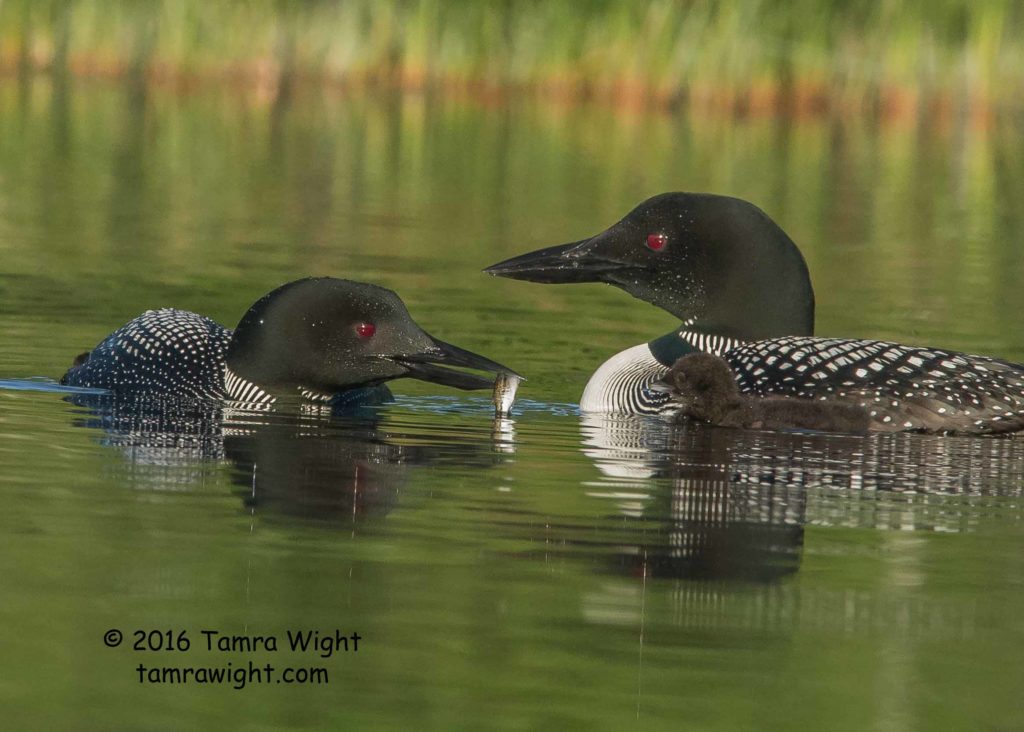
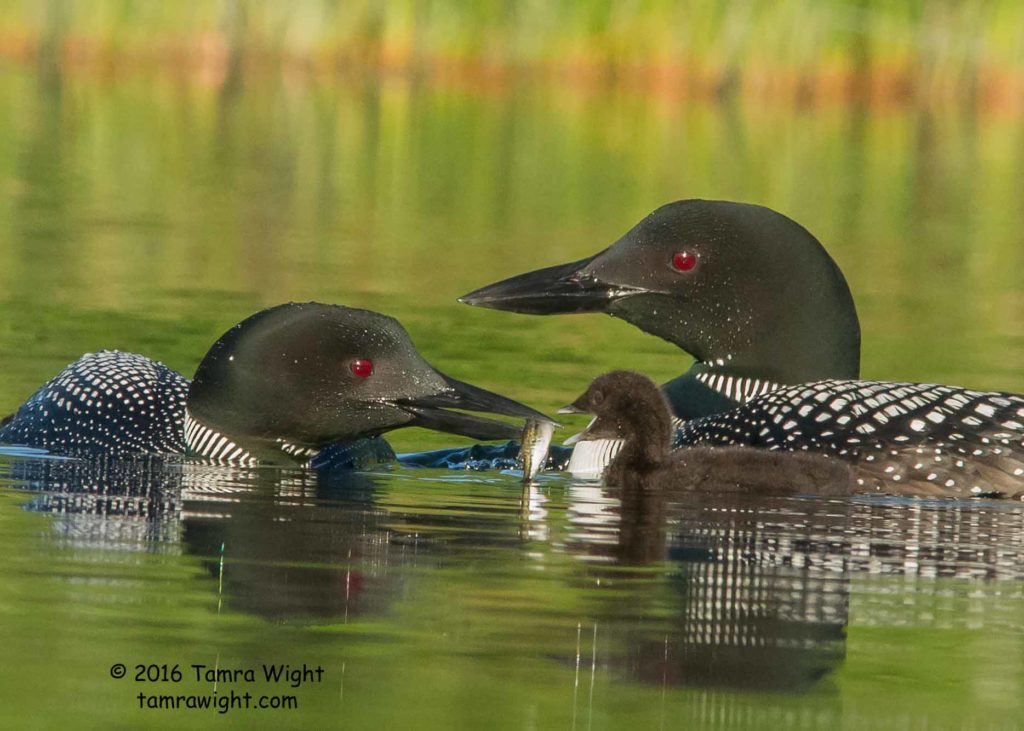
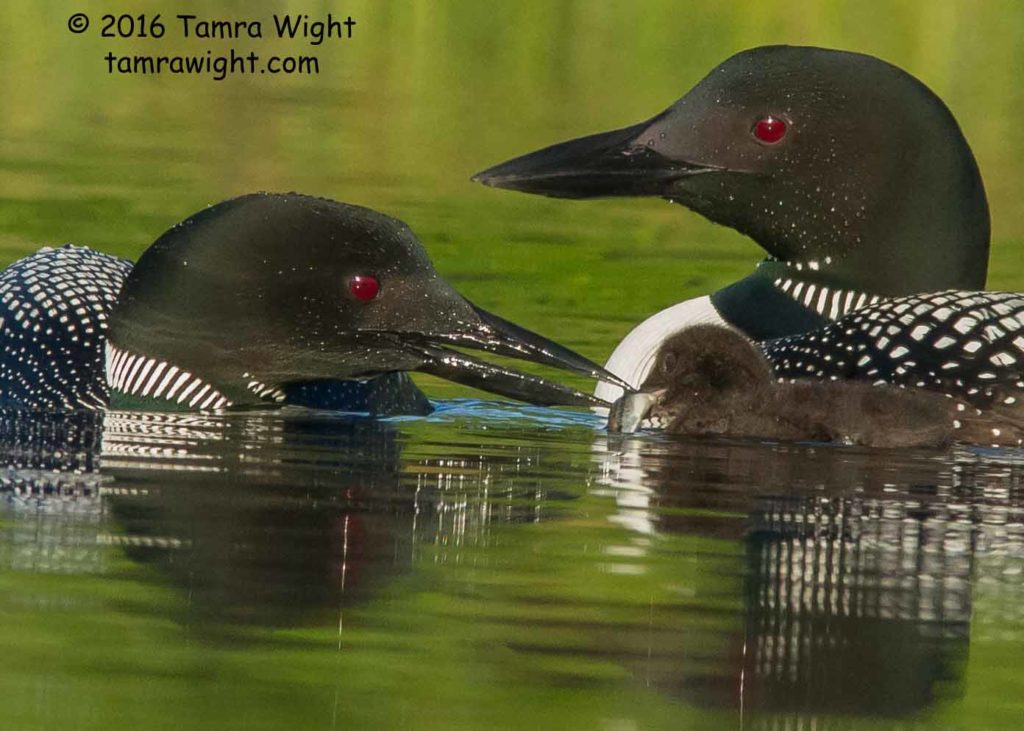
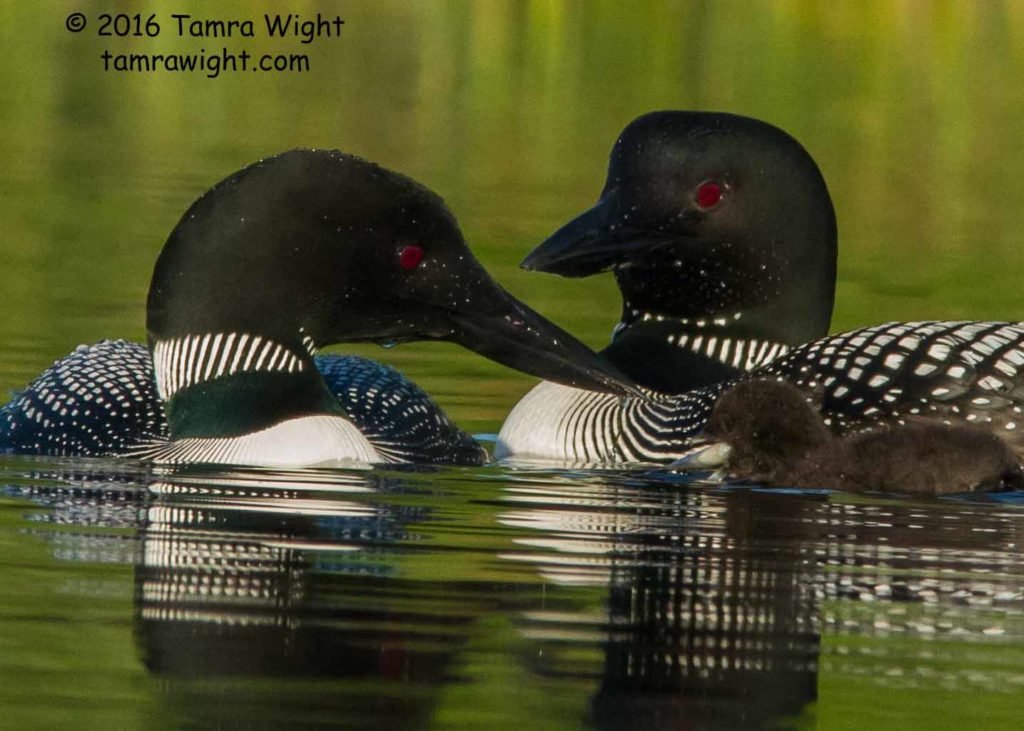
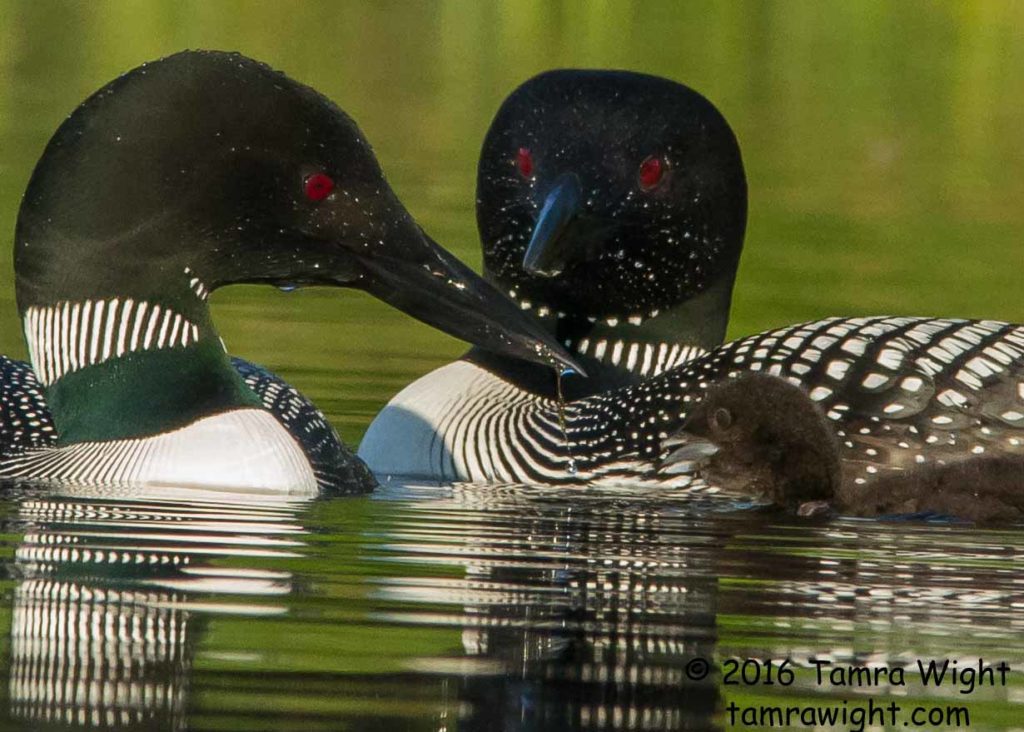
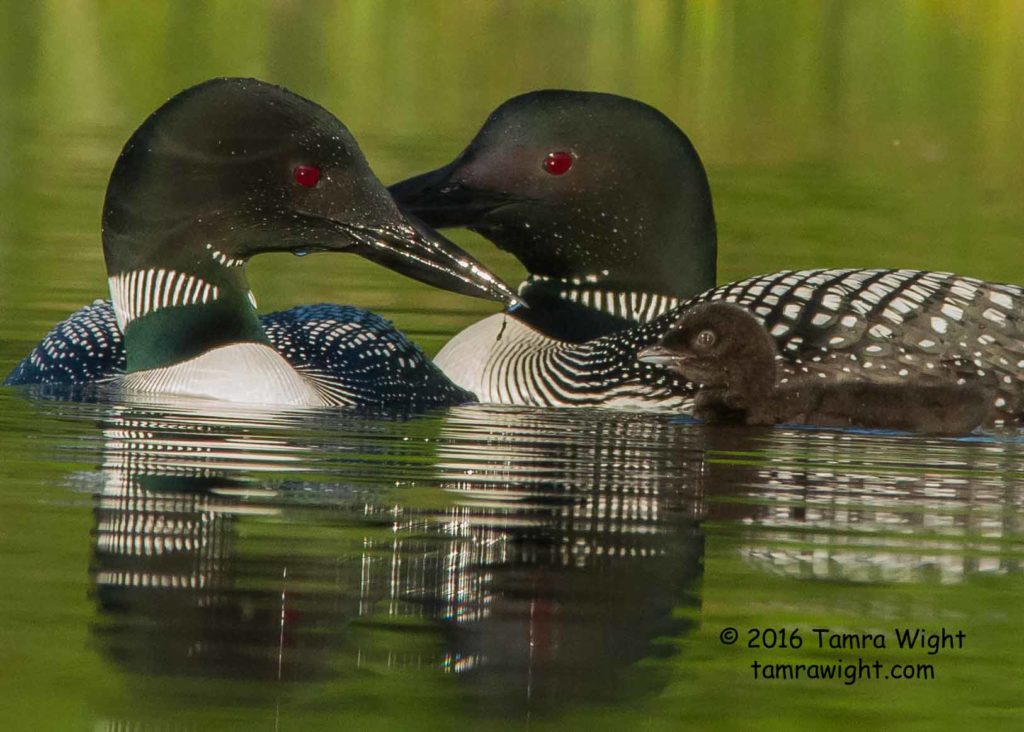
. . . through many feedings and wing stretches I watched . . .
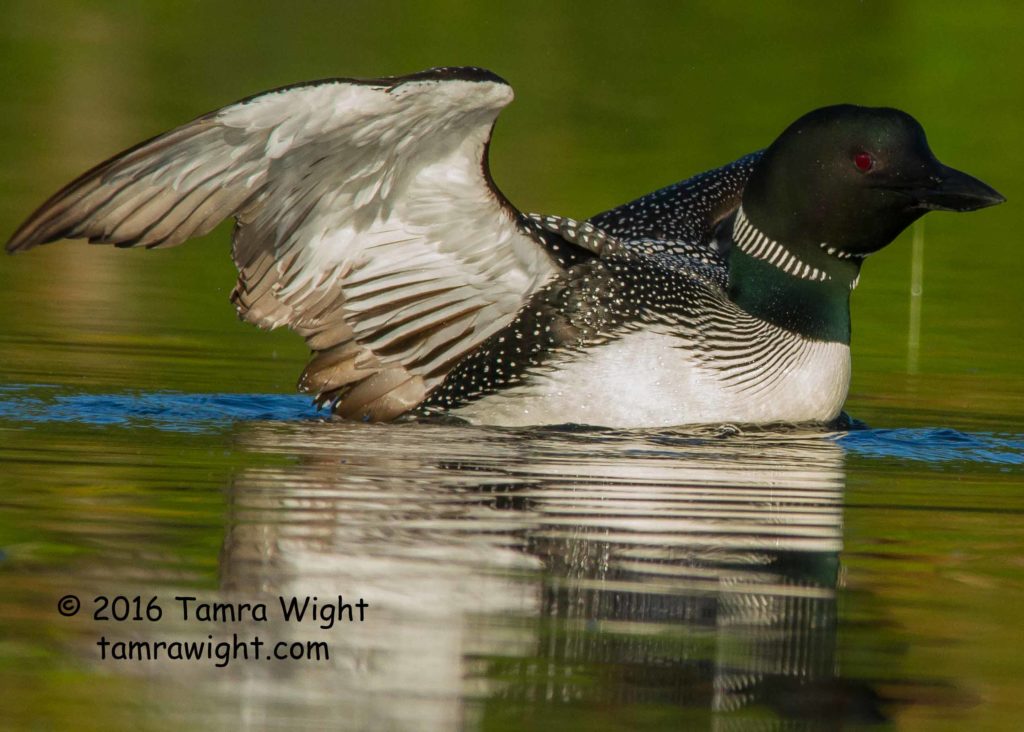
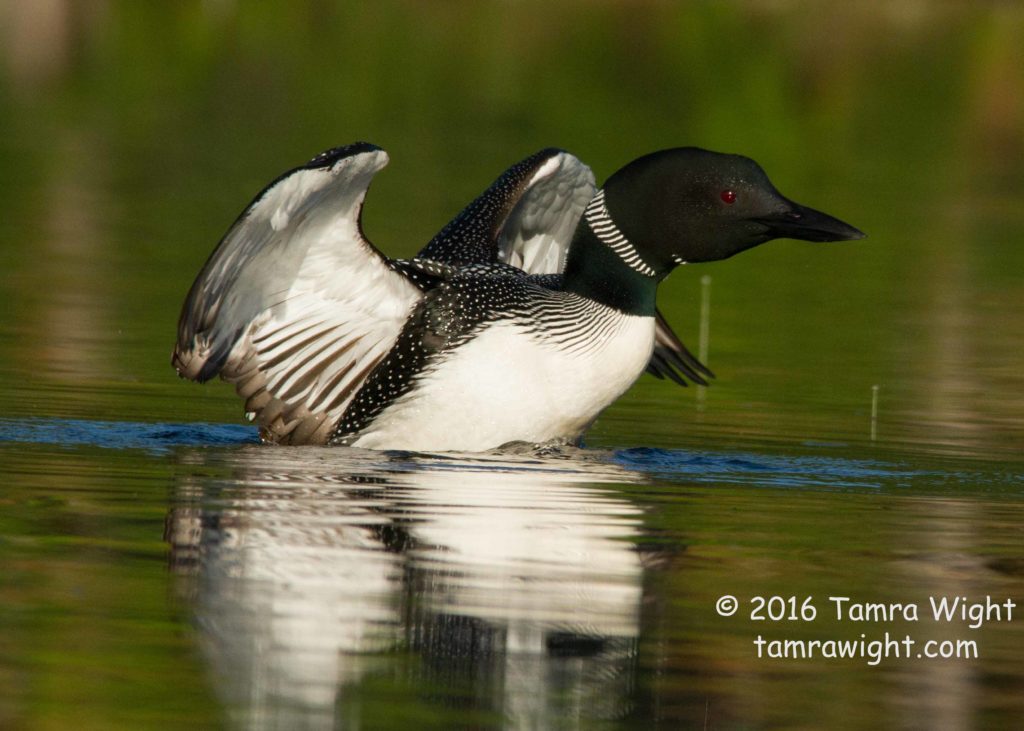
. . . but after half an hour or more, I had to give up hope. The second chick was lost.
I admit, I was sad and teary.
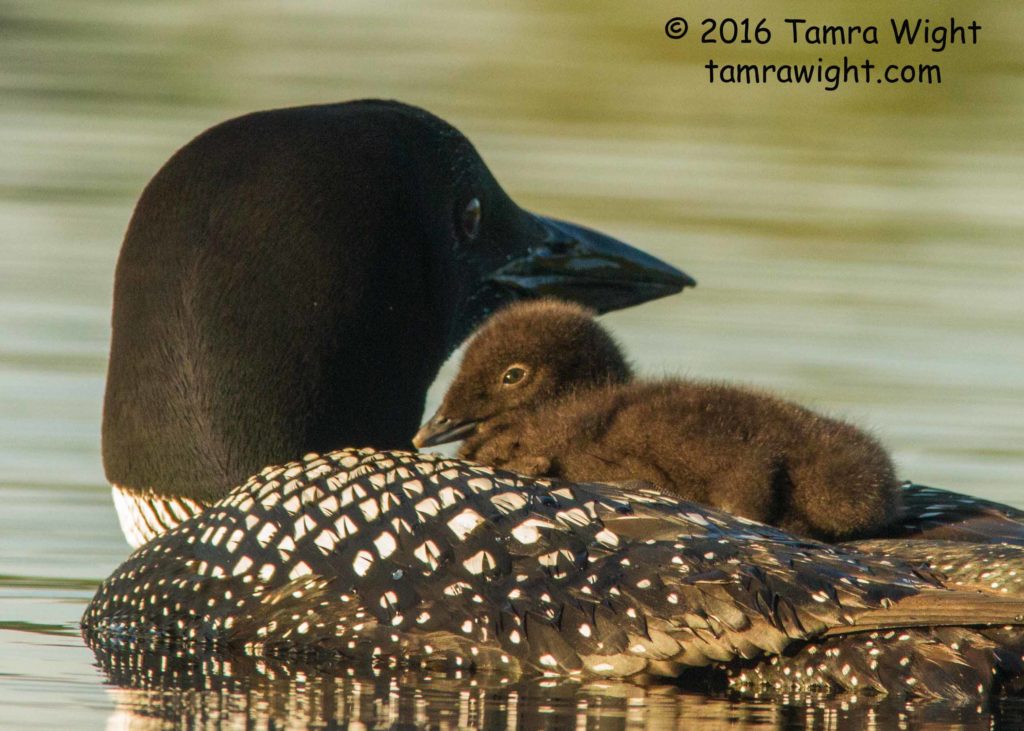
As I watched this little chick though, my heart became lighter. I began to celebrate his life. He’s adorable! Look how he pulls at his parent’s feathers as he rides!
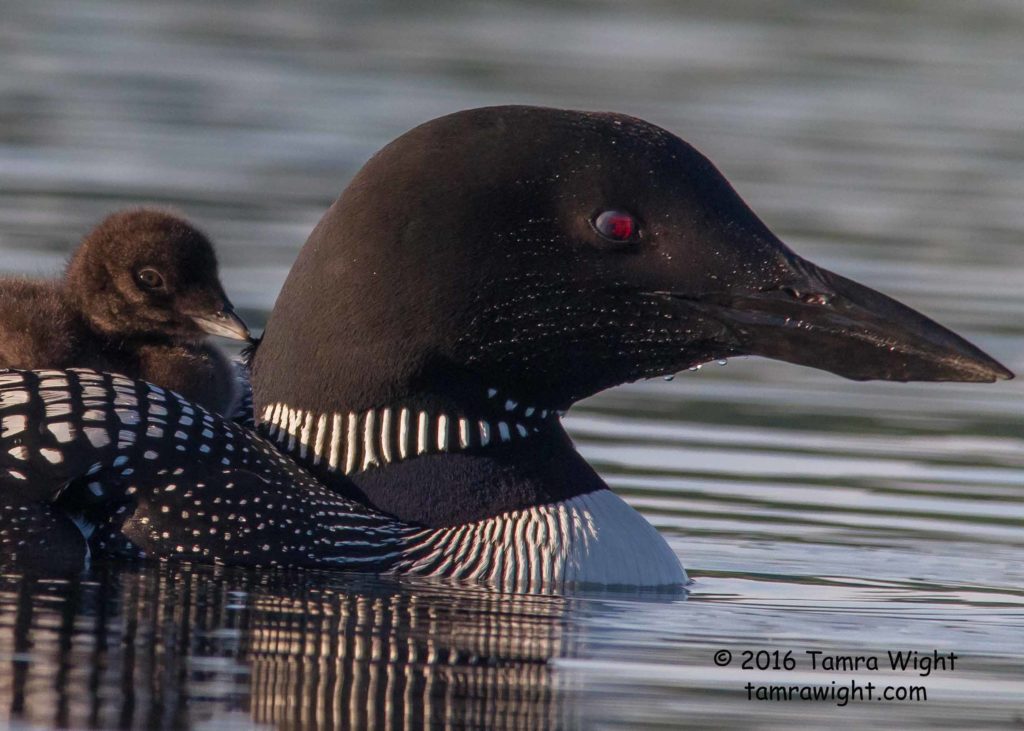
He stretches his wings, and you can almost see the adult loon he will be . . .
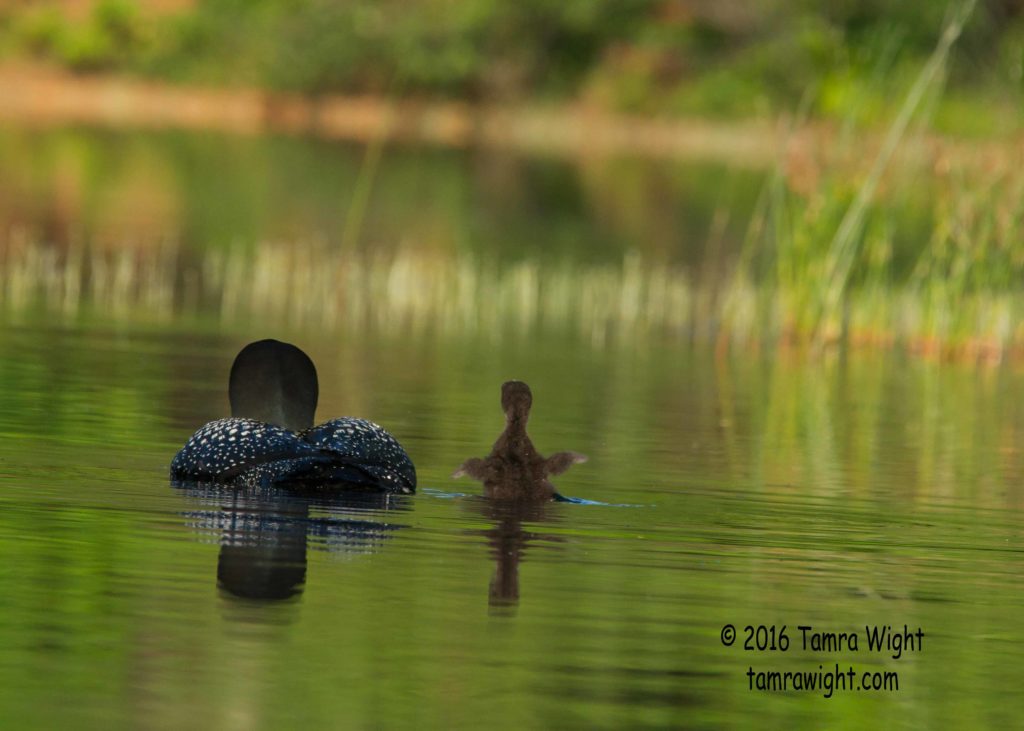
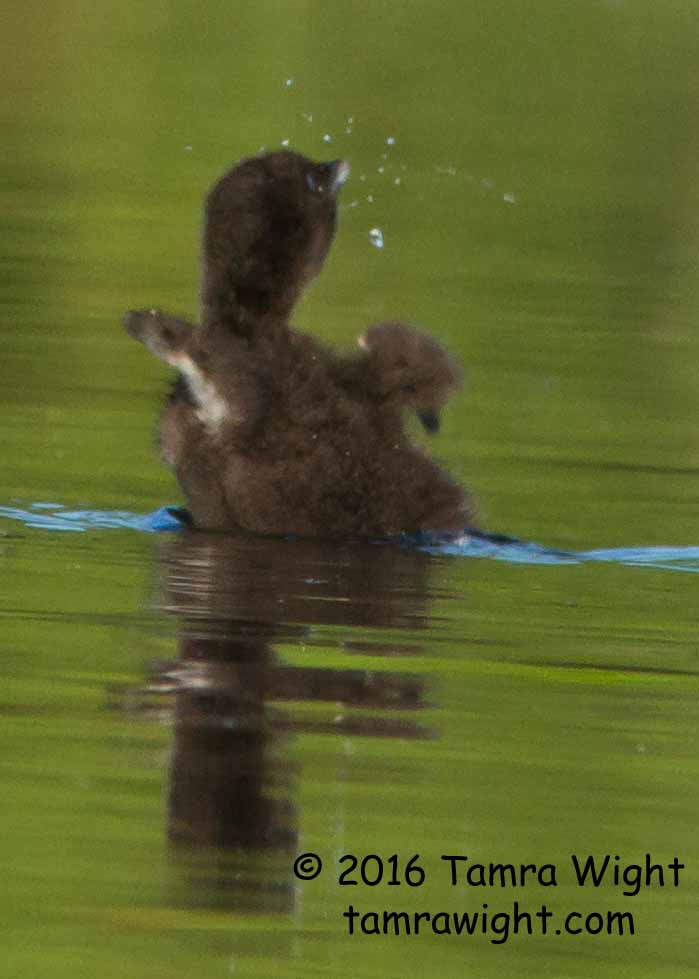
At only five days old, the little one learned so fast! He could already dive for a few seconds at a time. Every time he went under the surface, I held my breath!
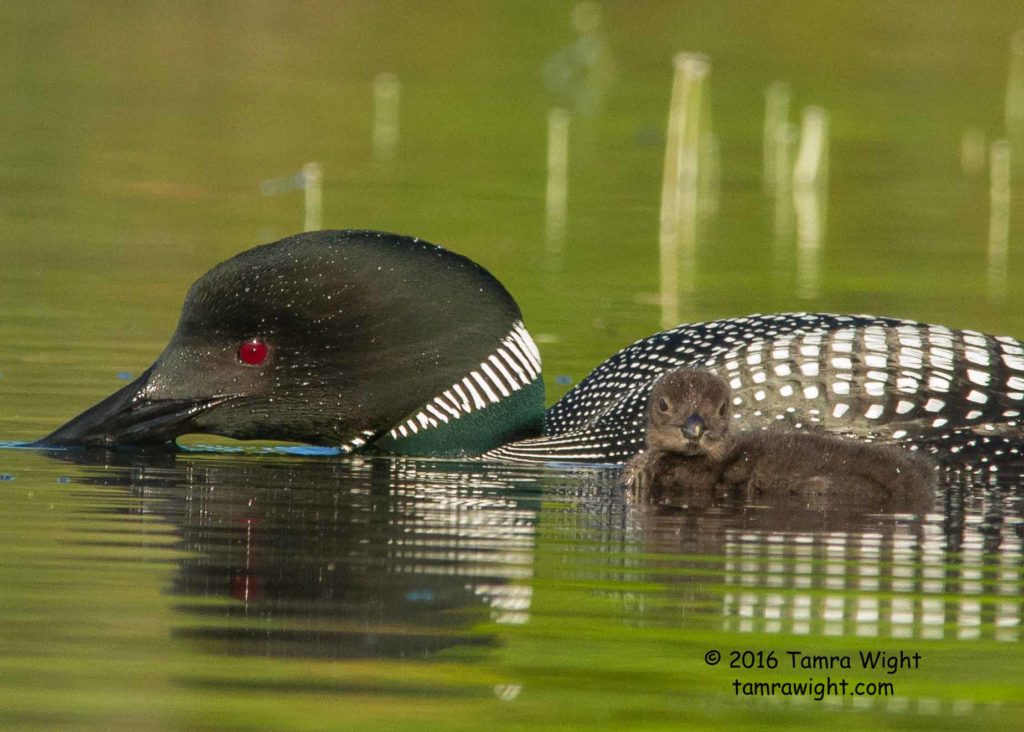
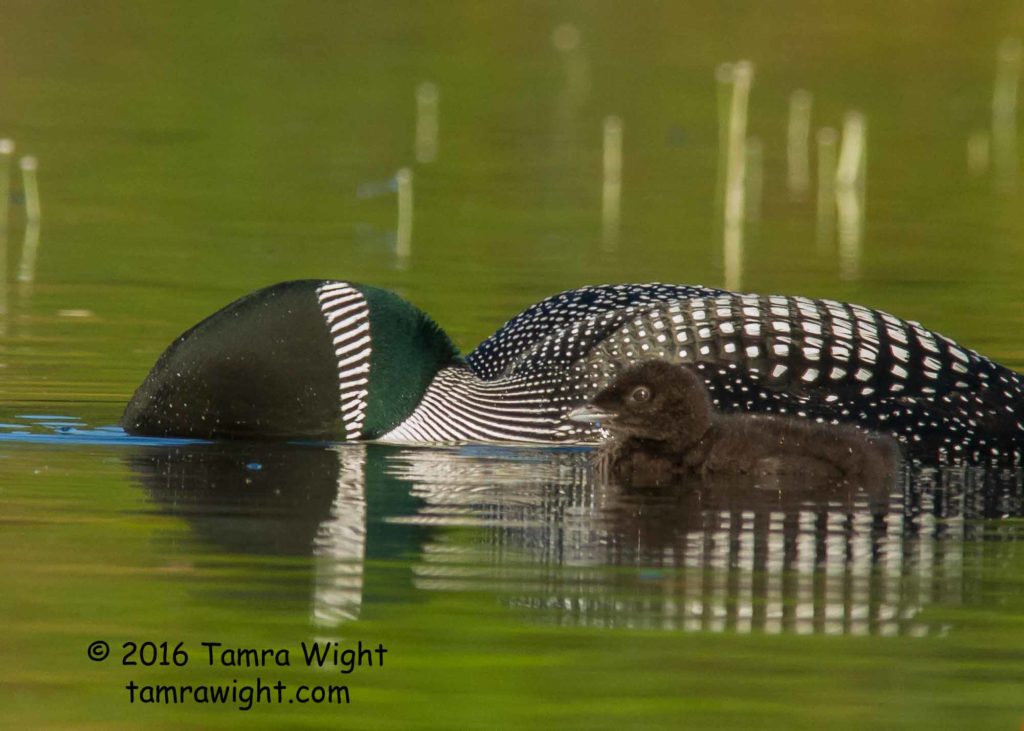
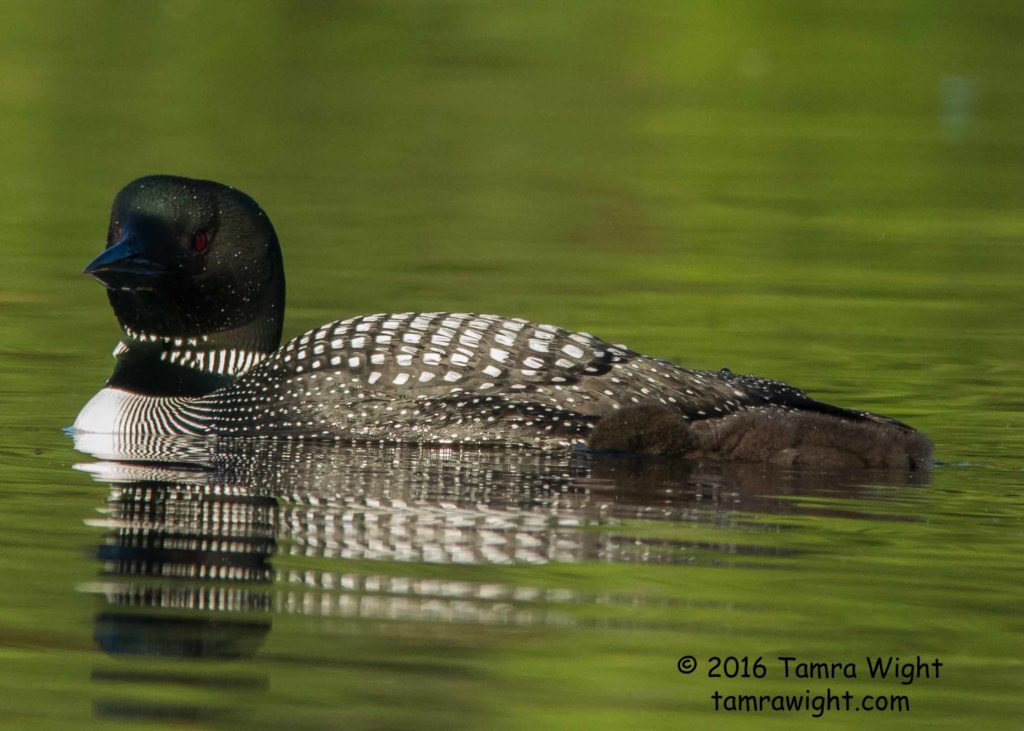
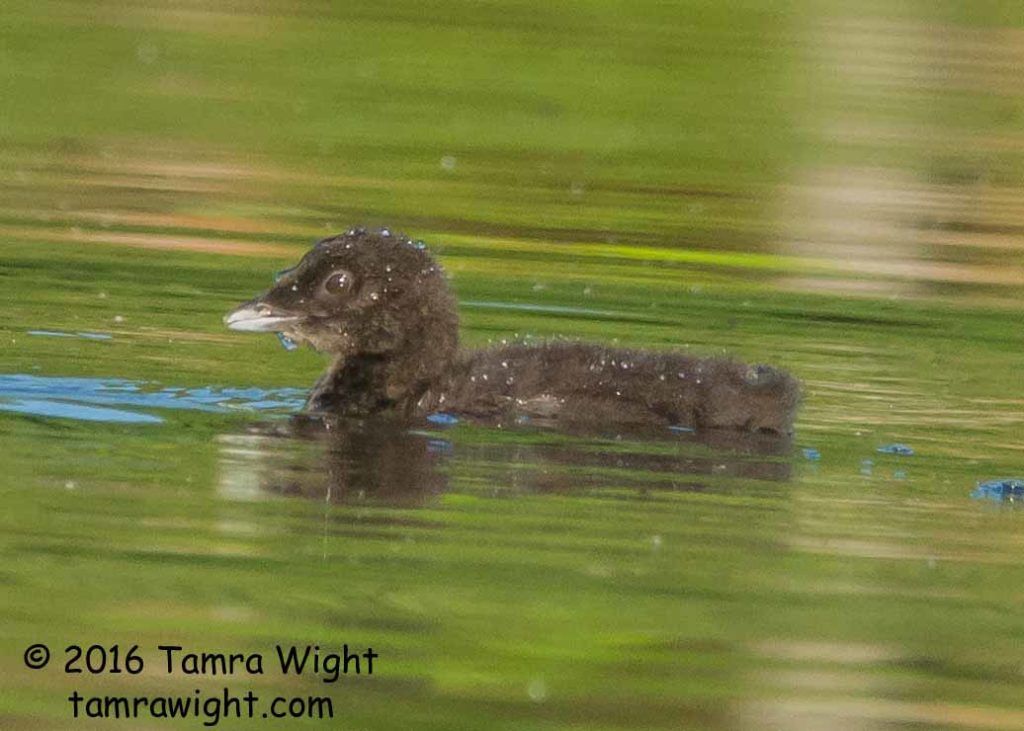
Both parents took care of feedings and cared for him. I watched as they brought tiny minnows over and over again . . .
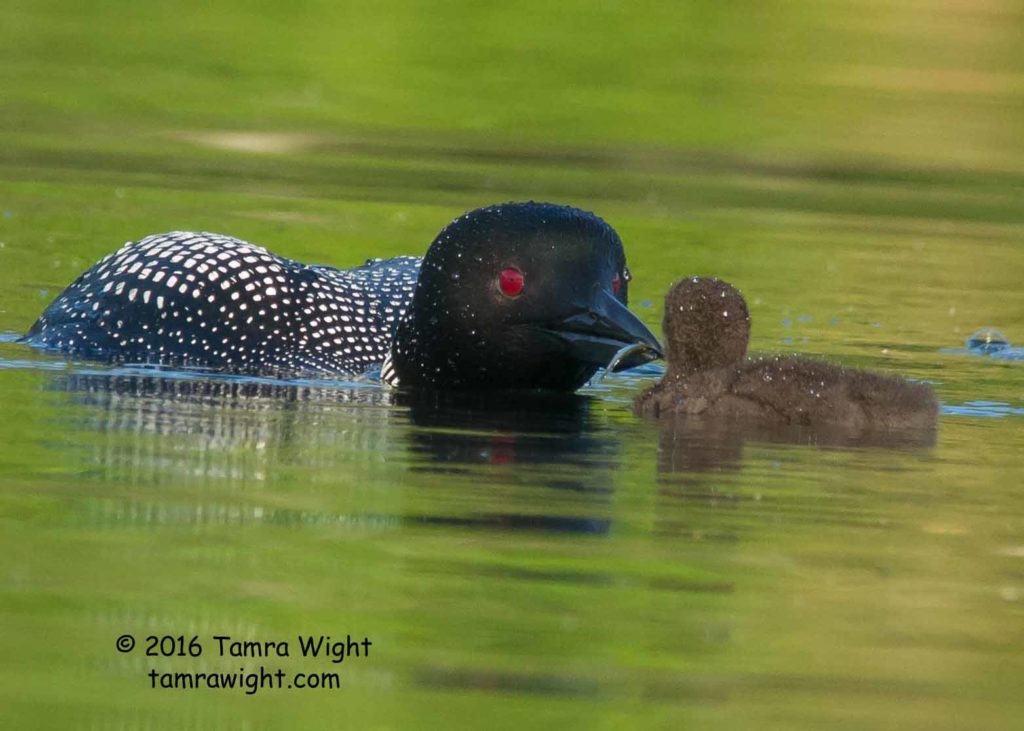
And this thing that looked like a bug . . .
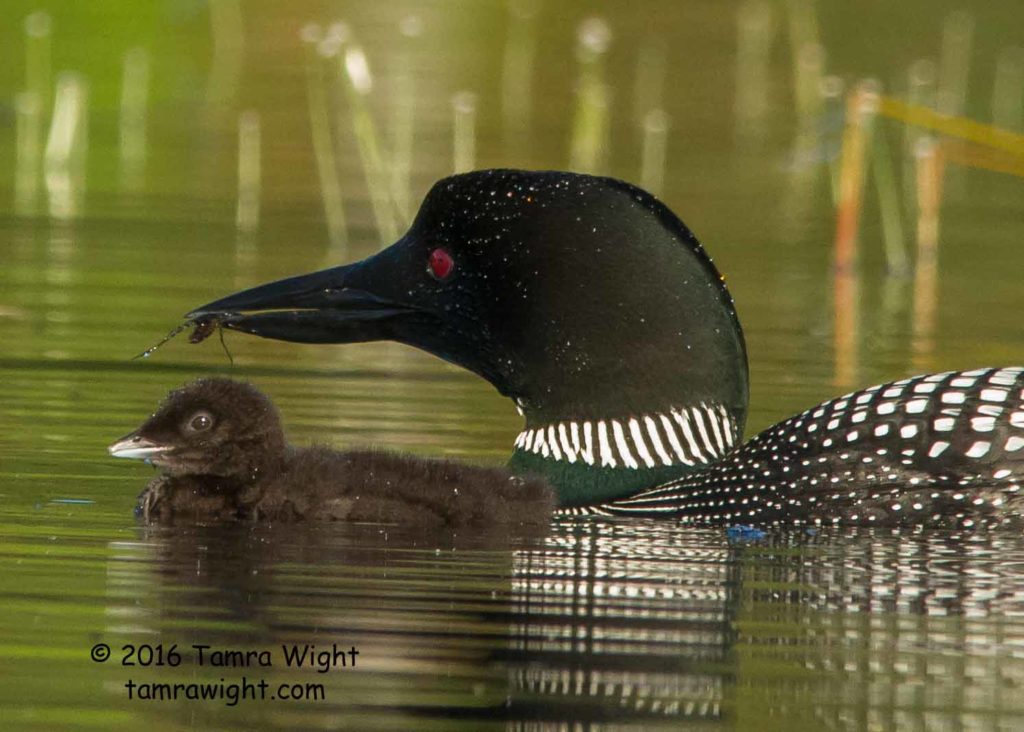
There were so many moments where I found myself saying “Awwwww!”
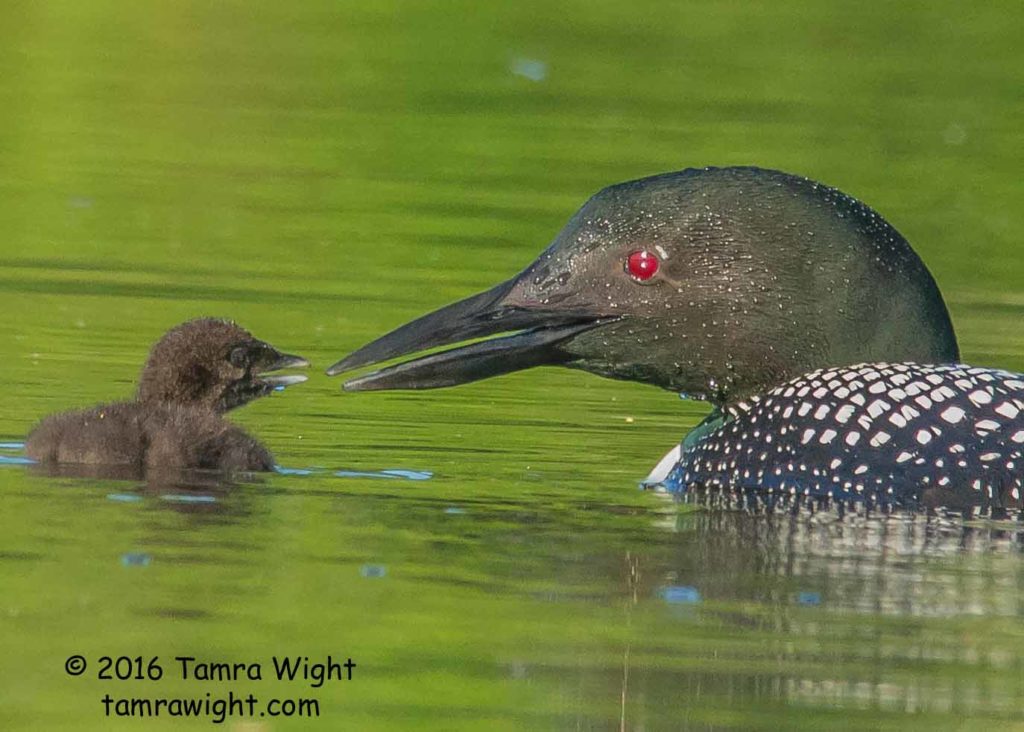
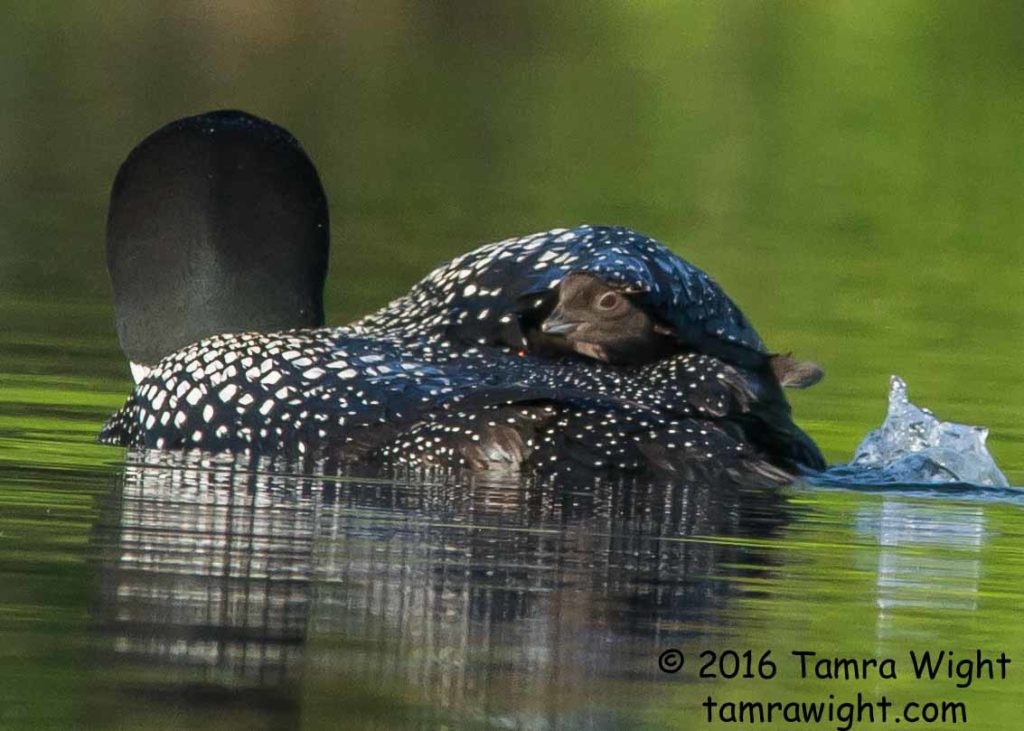
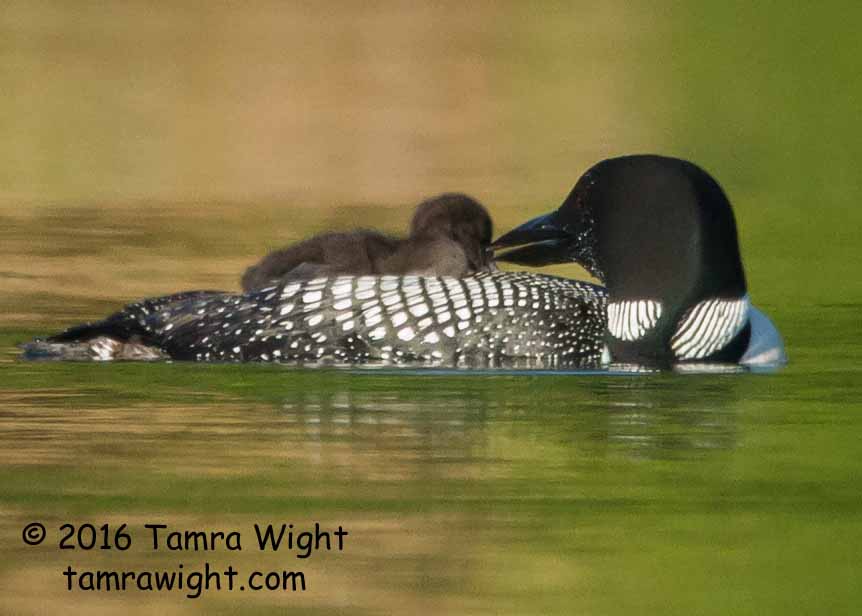
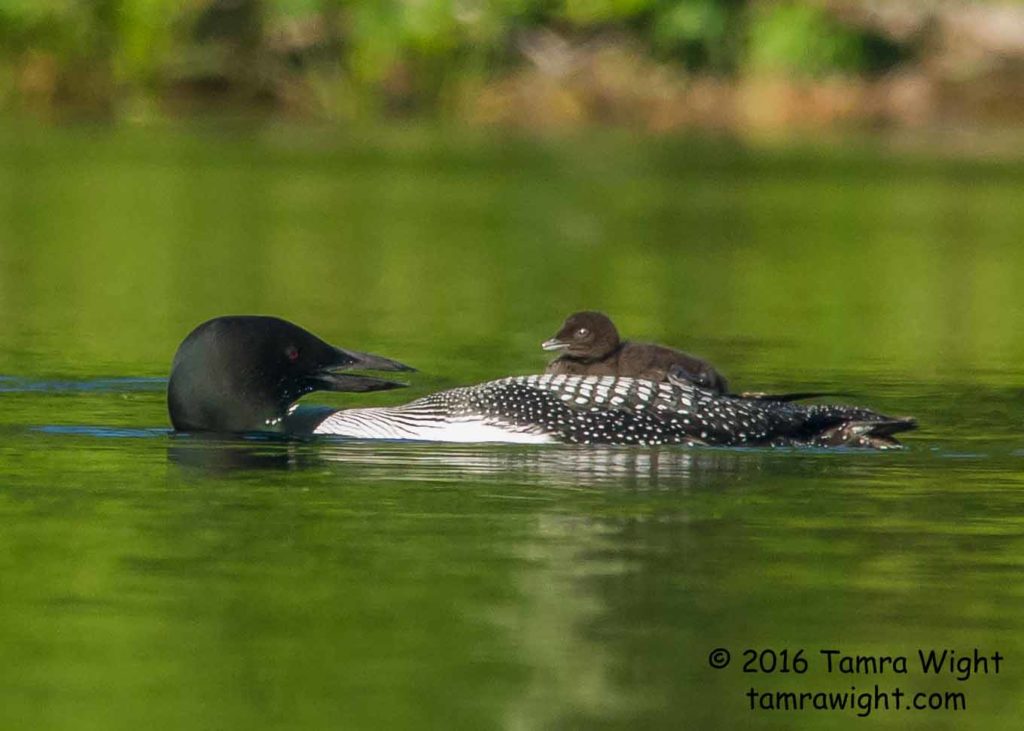
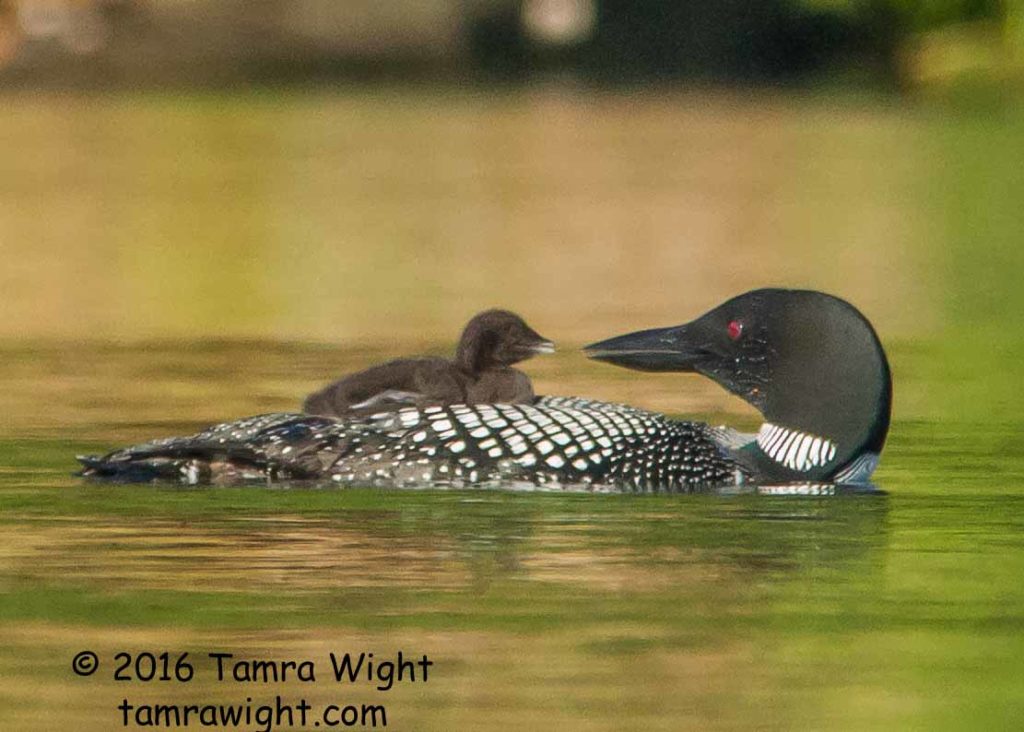
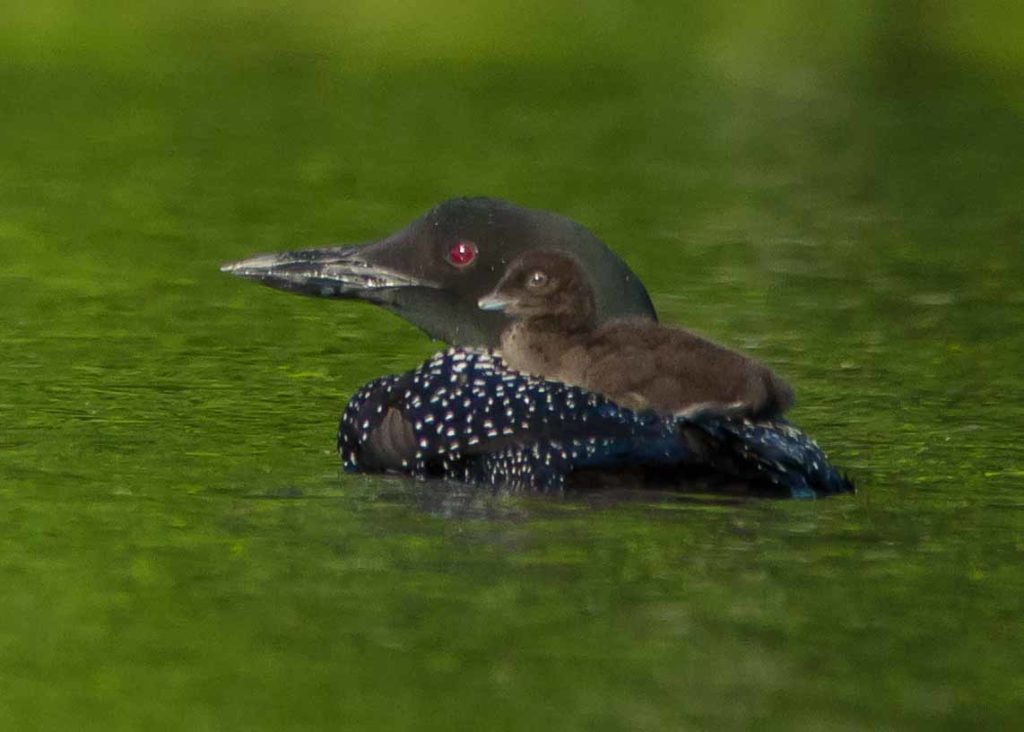
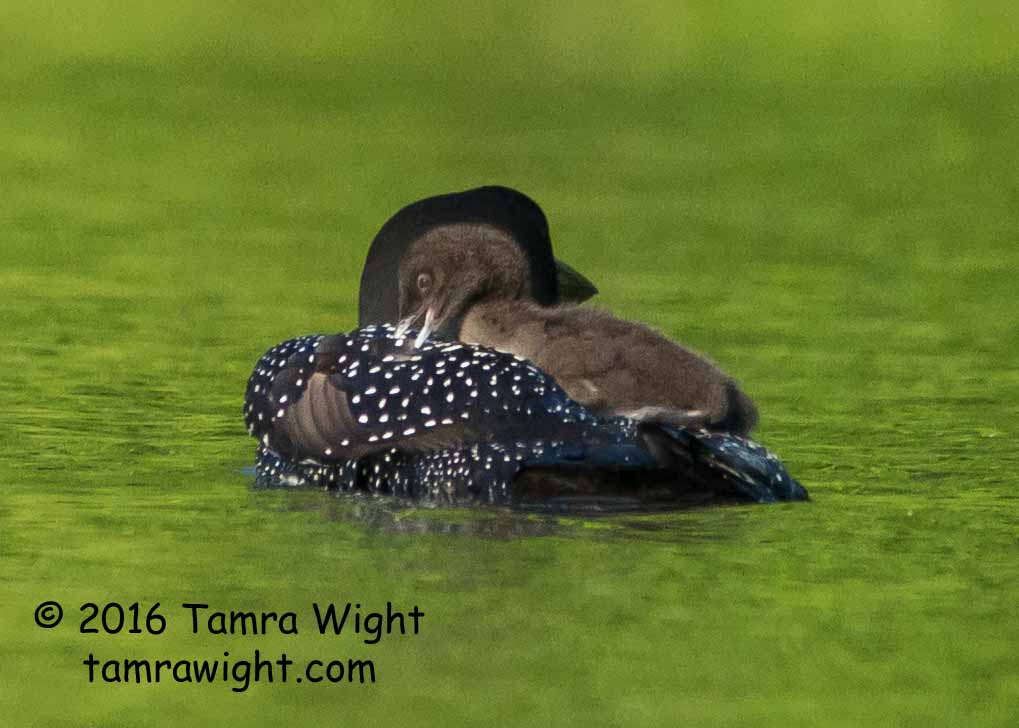
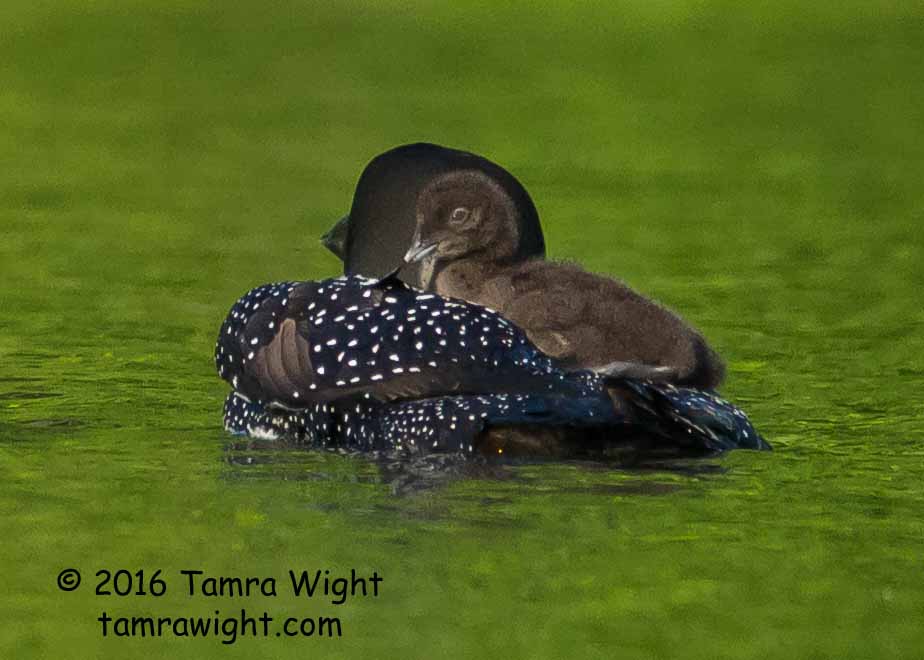
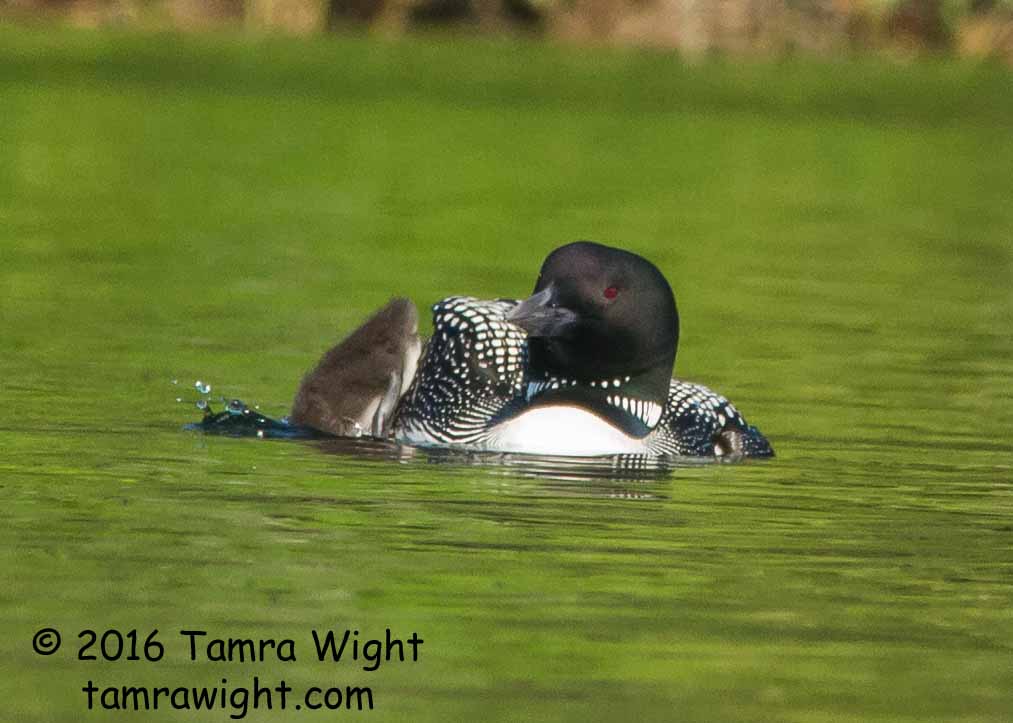
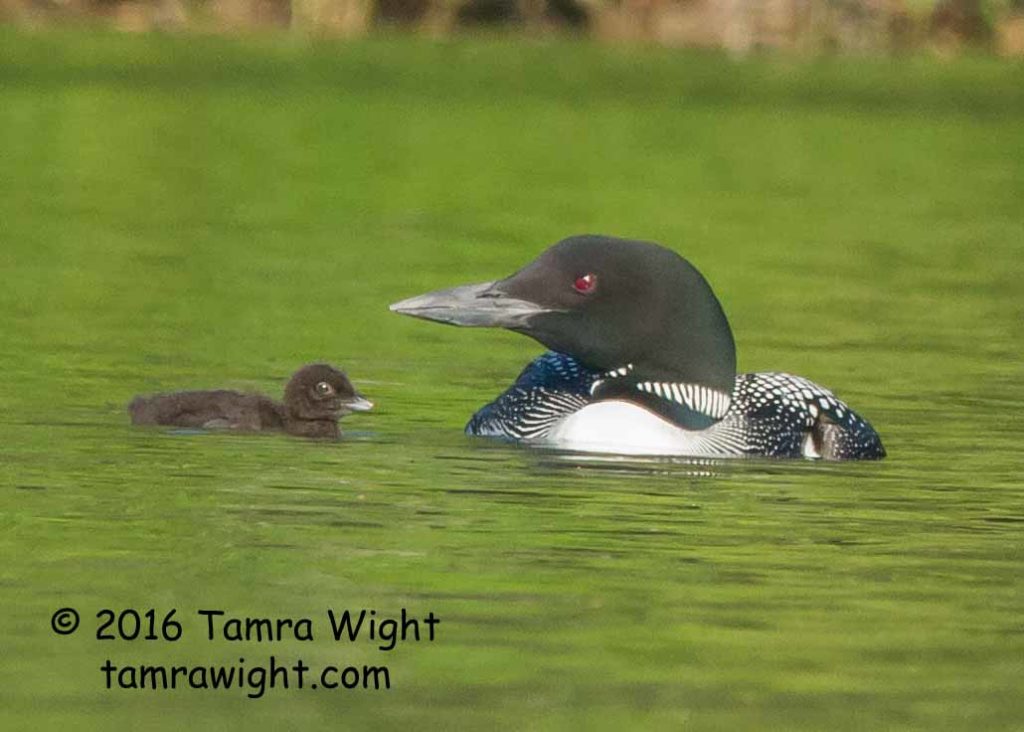
I swear I watched the loons for an hour and a half that day. So many times I thought I’d paddle home . . . I really should go back to the camp office to work . . . I had paperwork to do . . . customers to greet.
But I couldn’t tear myself away. I took a little over 400 photos in that one sitting.
Suddenly, the adult with the chick struck a different pose . . .
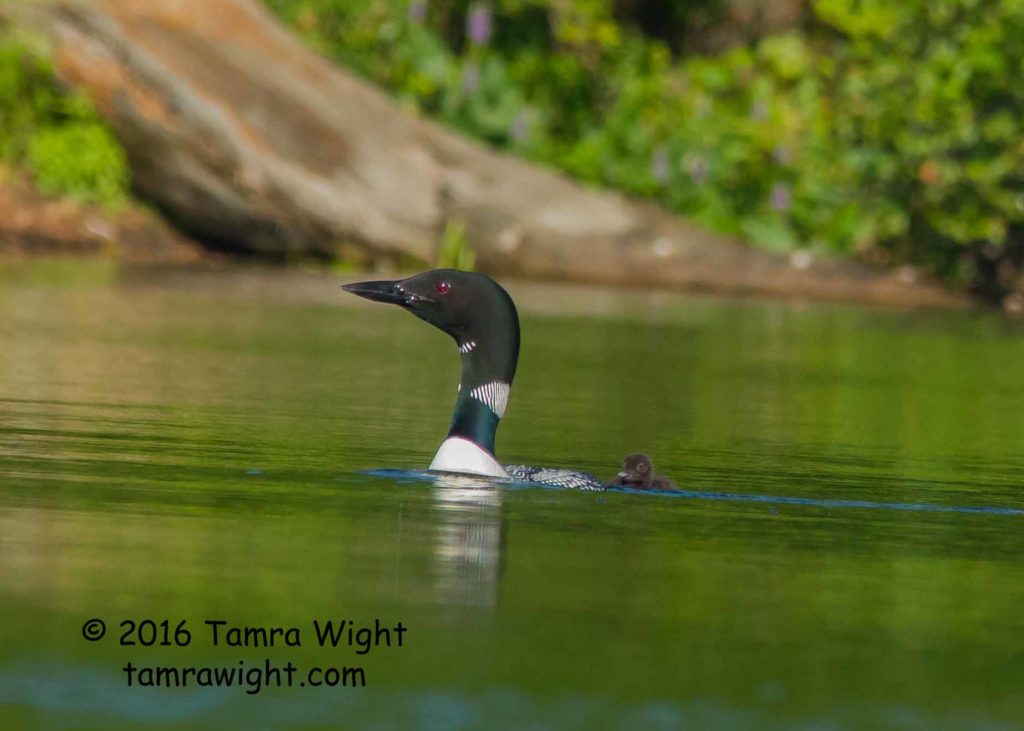
This adult was on alert. I looked wildly around. The other parent was yards away to my right. I didn’t see any herons or eagles or . . .
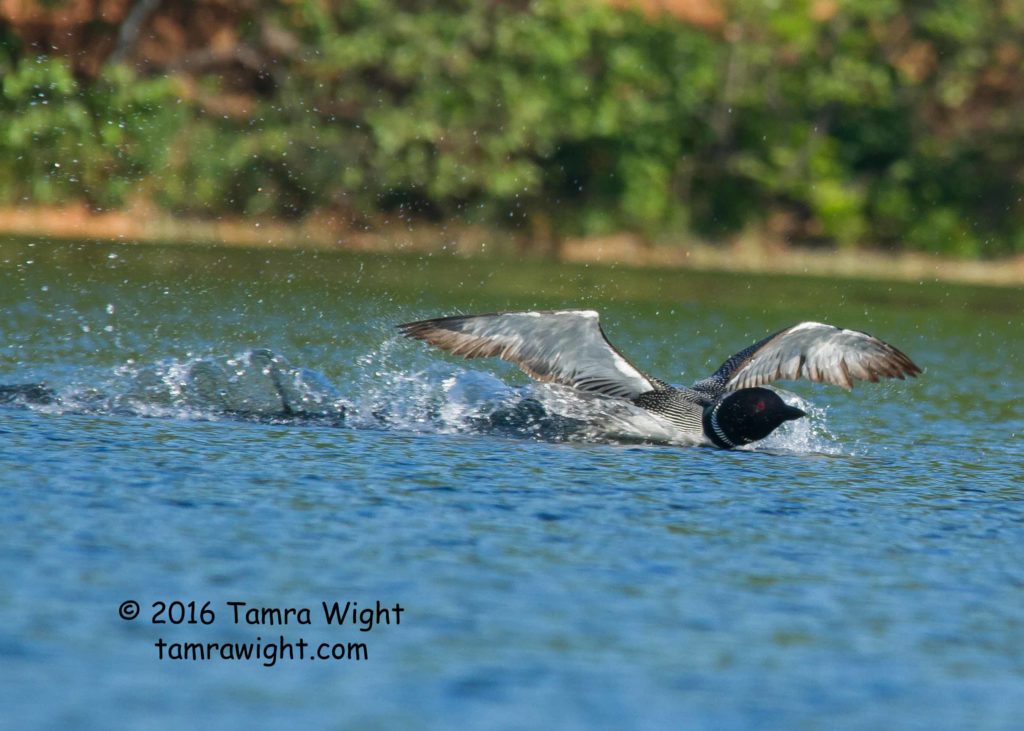
Whoa! Without warning, the adult loon ran across the water! I knew that behavior. She was upset, territorial, and she was coming at me!
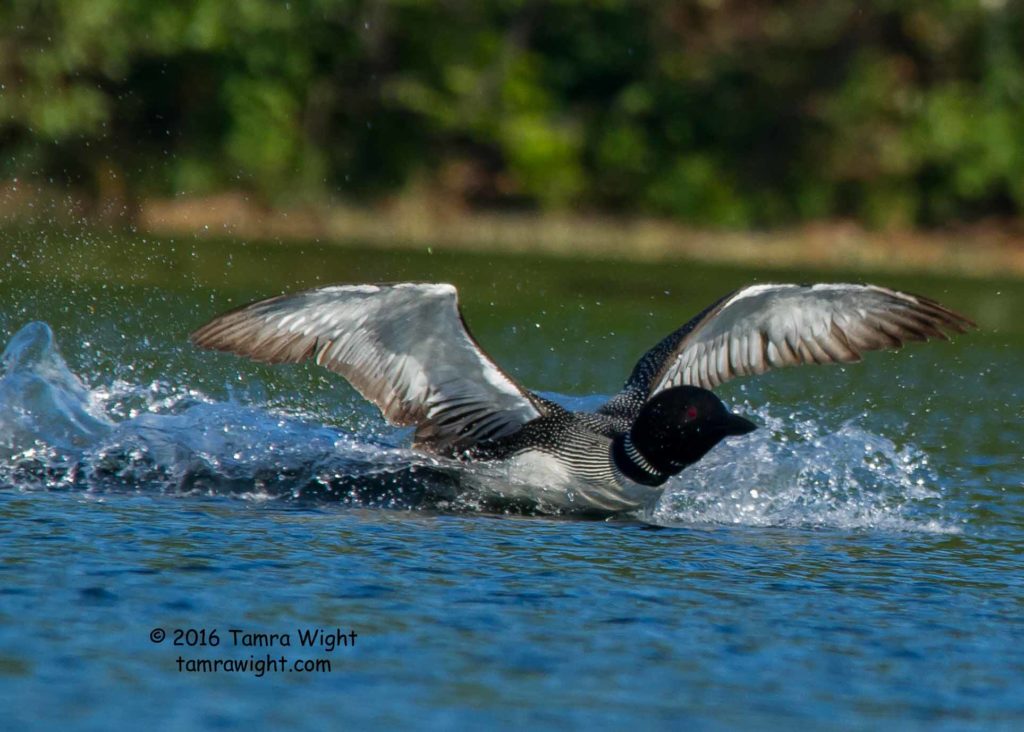
Was she upset at me? After weeks and weeks of watching them carefully from a distance, what did I do? I picked up my paddle with my free hand and pushed backward a few yards. But she kept coming!
I got lower in the kayak to appear smaller. She went into a penquin-type dance across the water. Notice how her beak is down. This is not a happy-to-be-on-the-lake stretch of the wings.
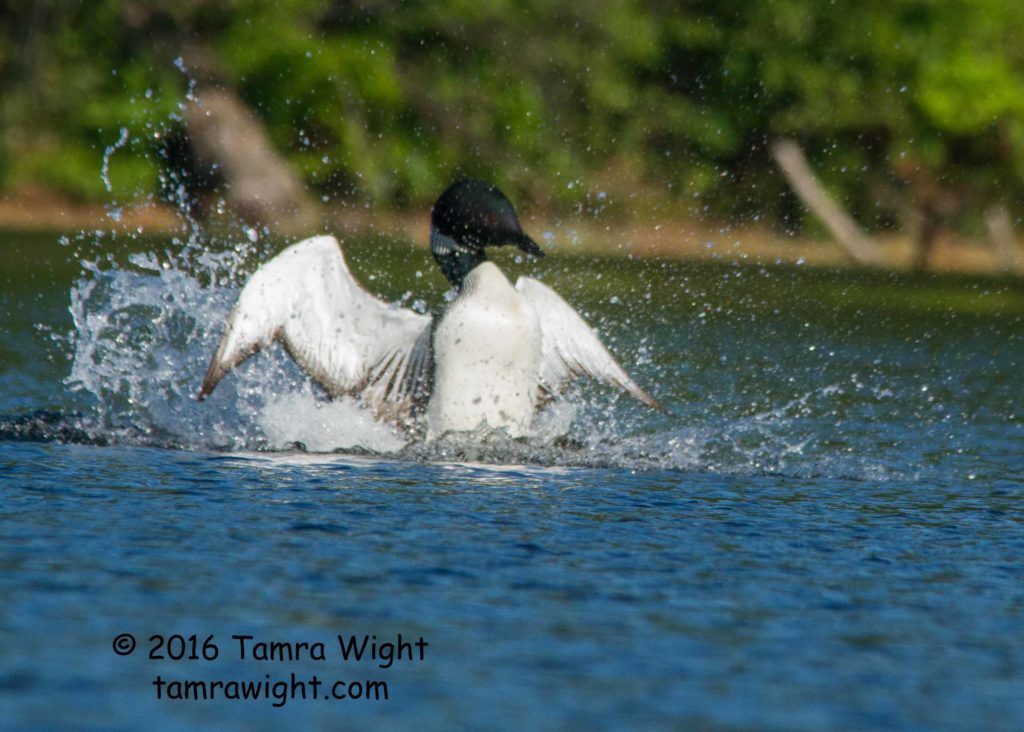
She’s mad!
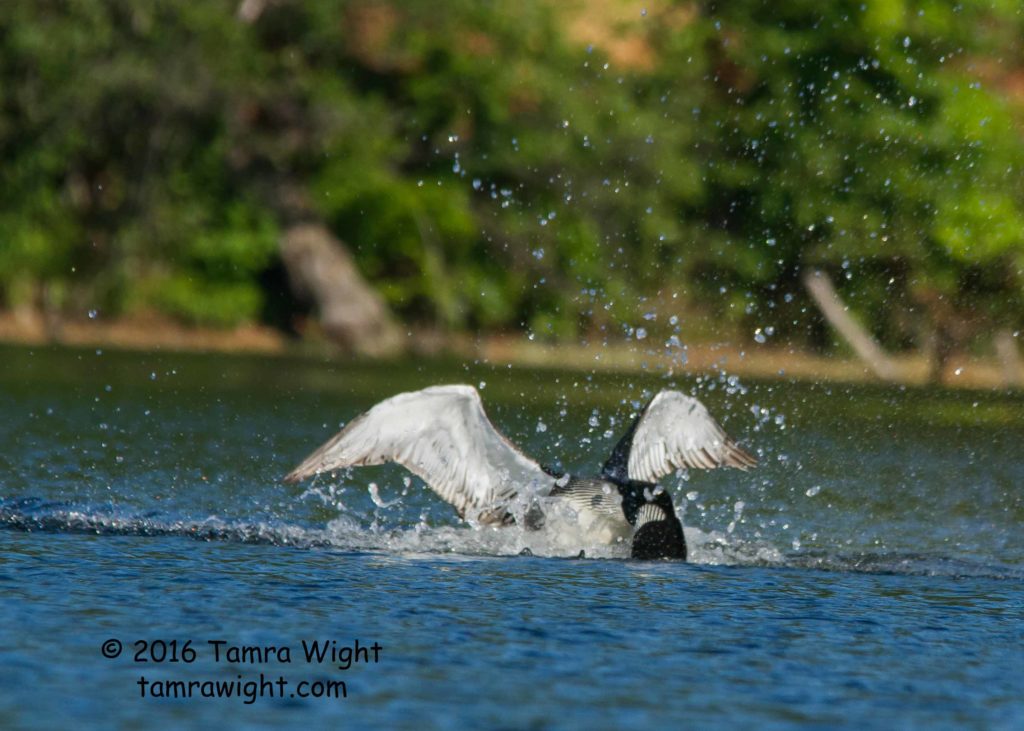
She ducked in the water, then reared up again.
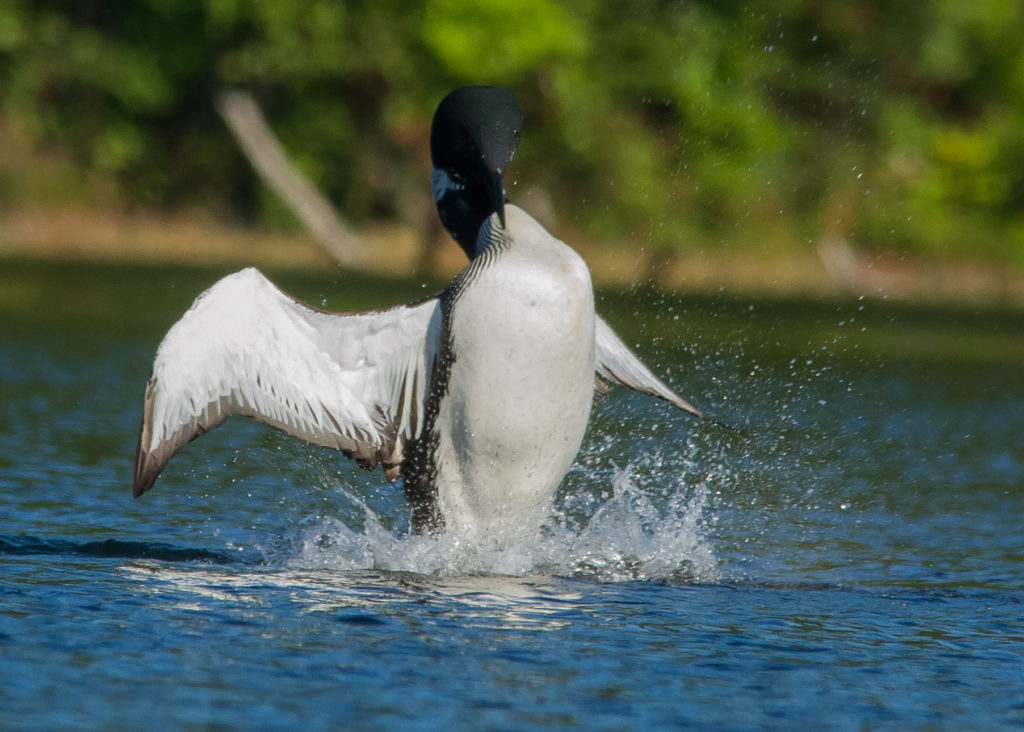
I paddled backward again. What did I do?
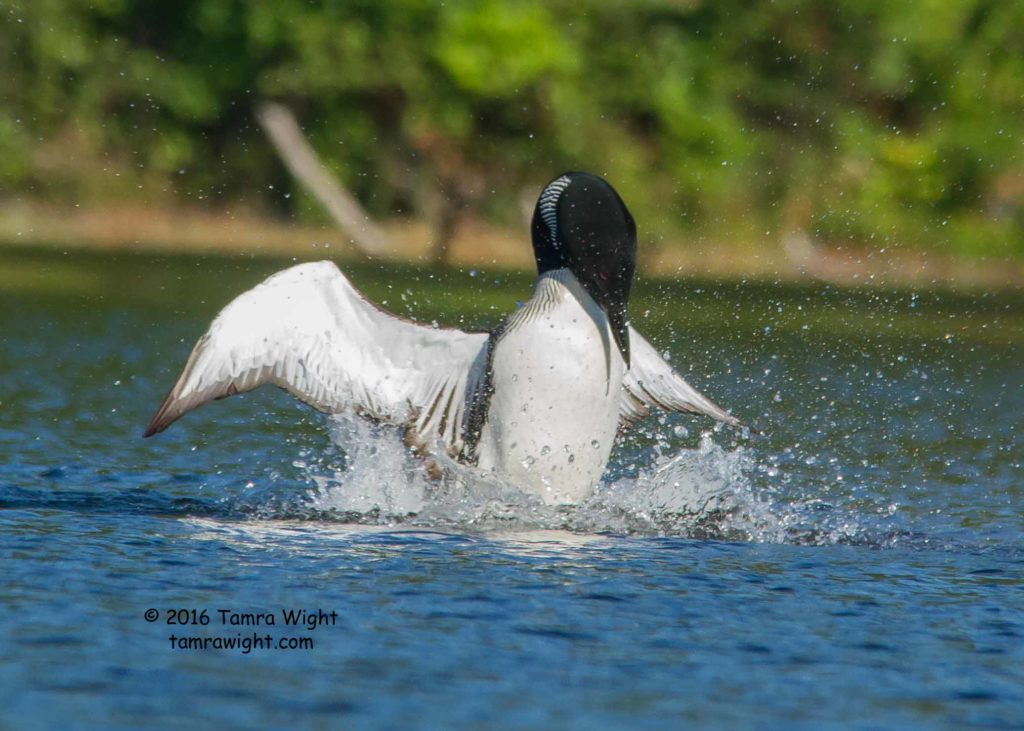
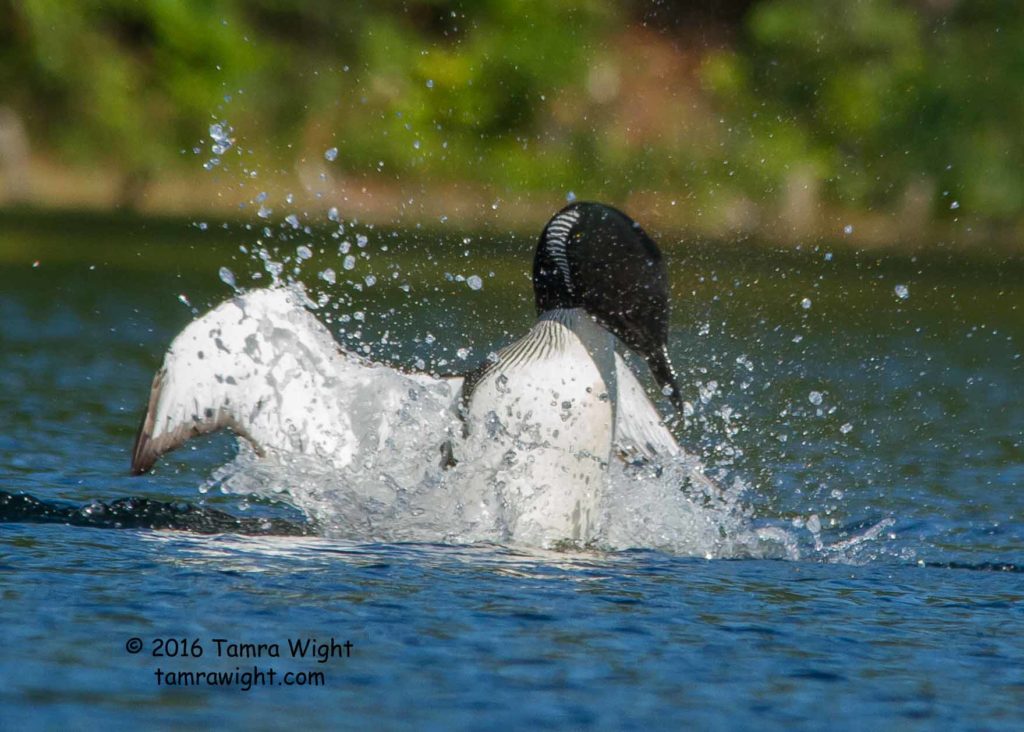
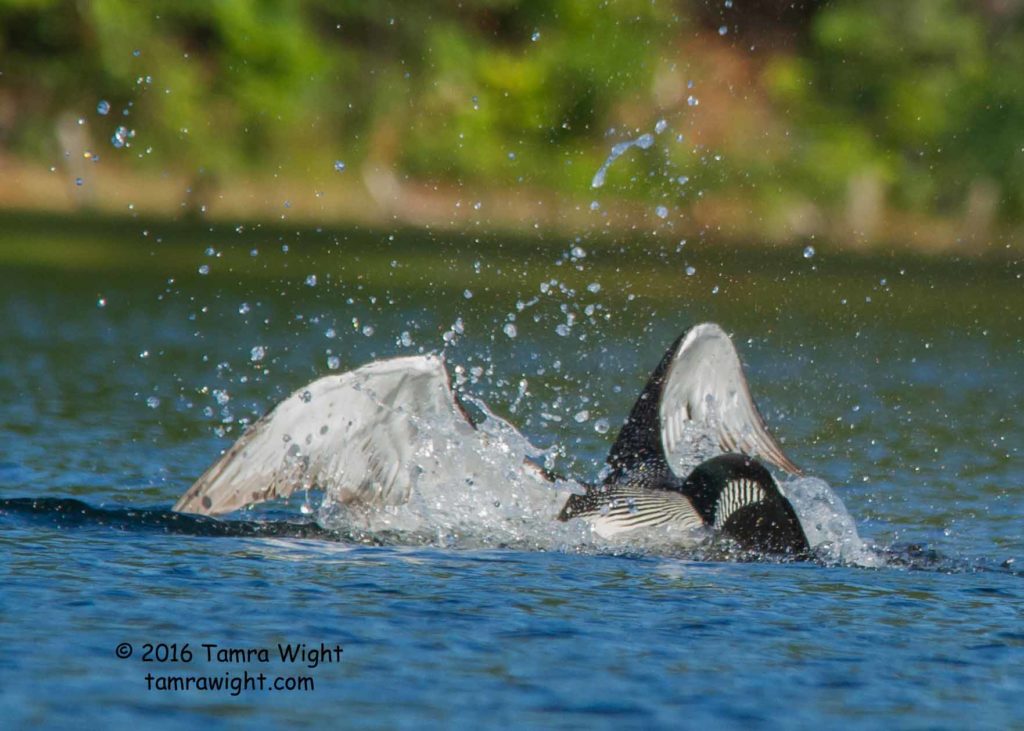
She went right past my kayak . . .
It wasn’t me at all.
I turned in my seat and there, right behind me, was a third adult come to visit.
And these two parents were not happy about it.
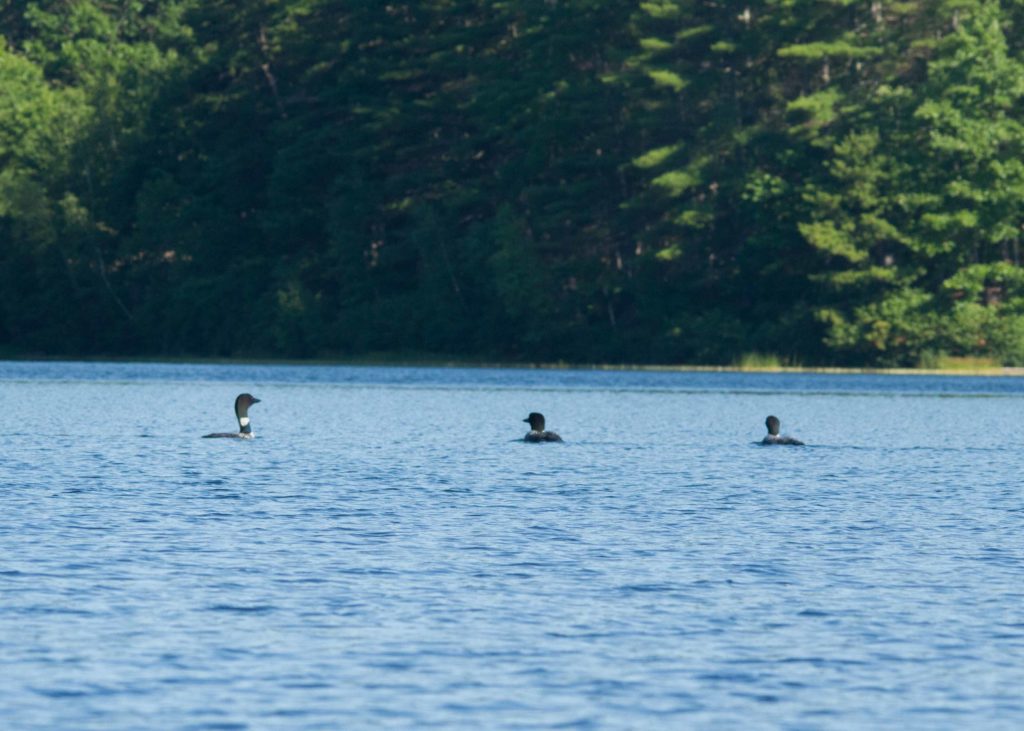
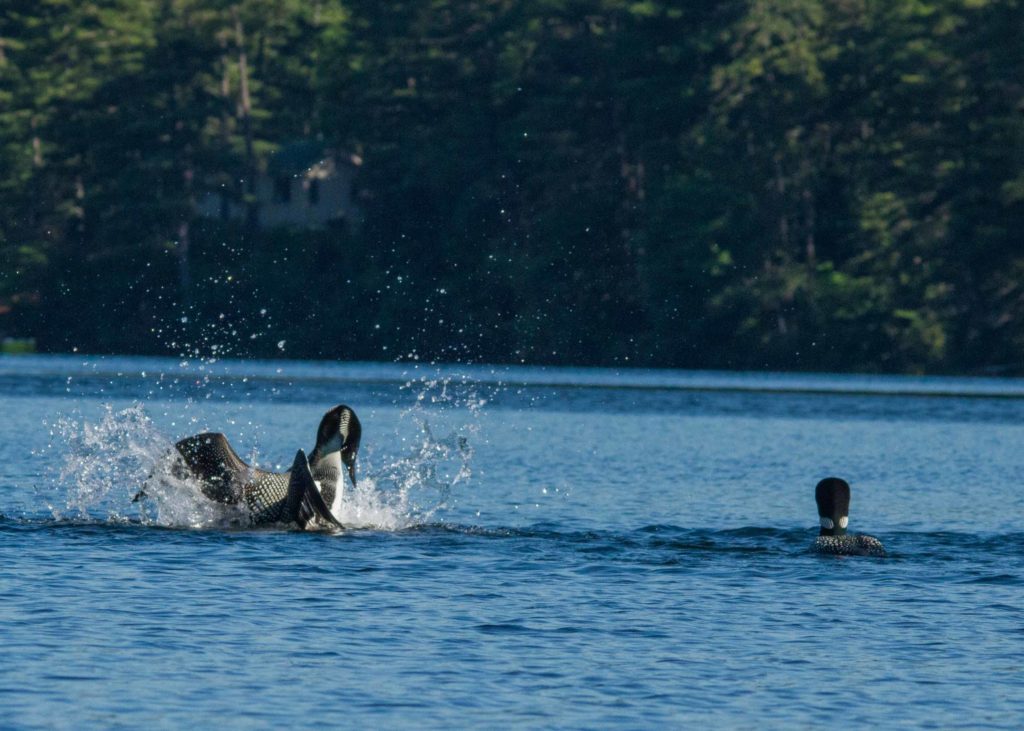
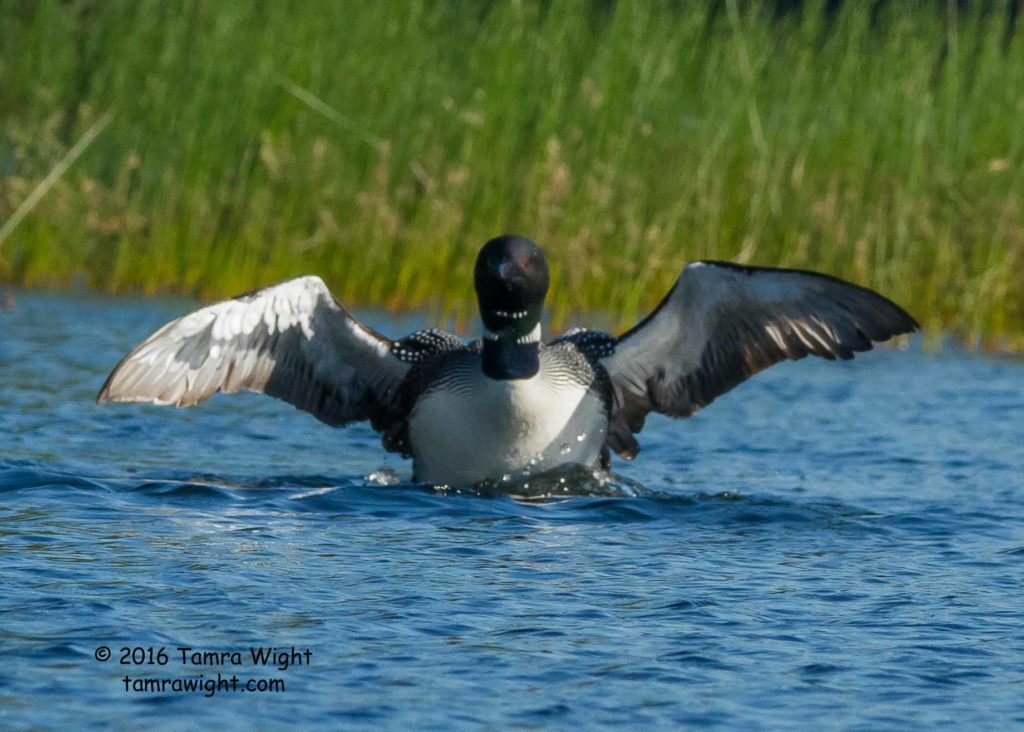
They swam and head bobbed, and circled each other for a time.
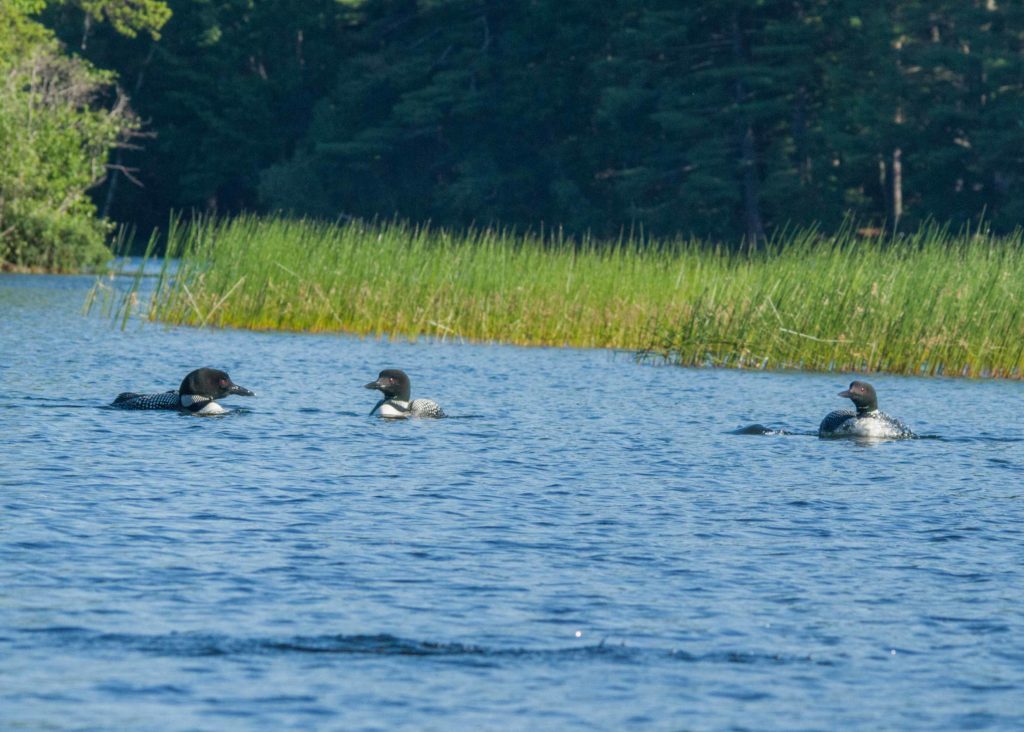
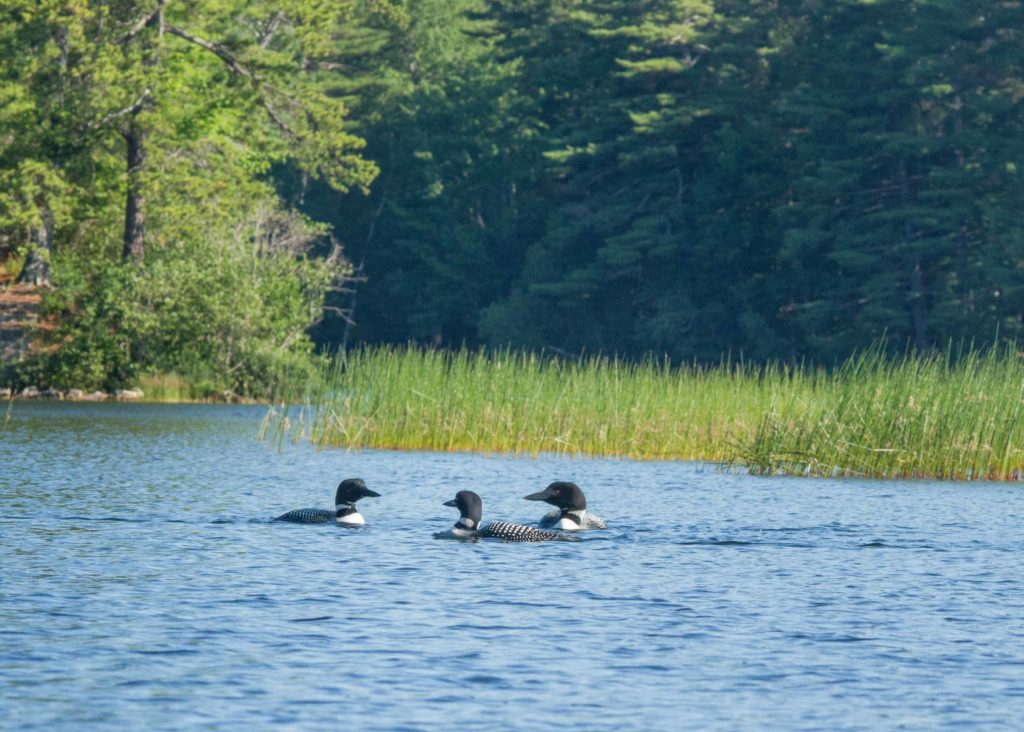
They battled, too.
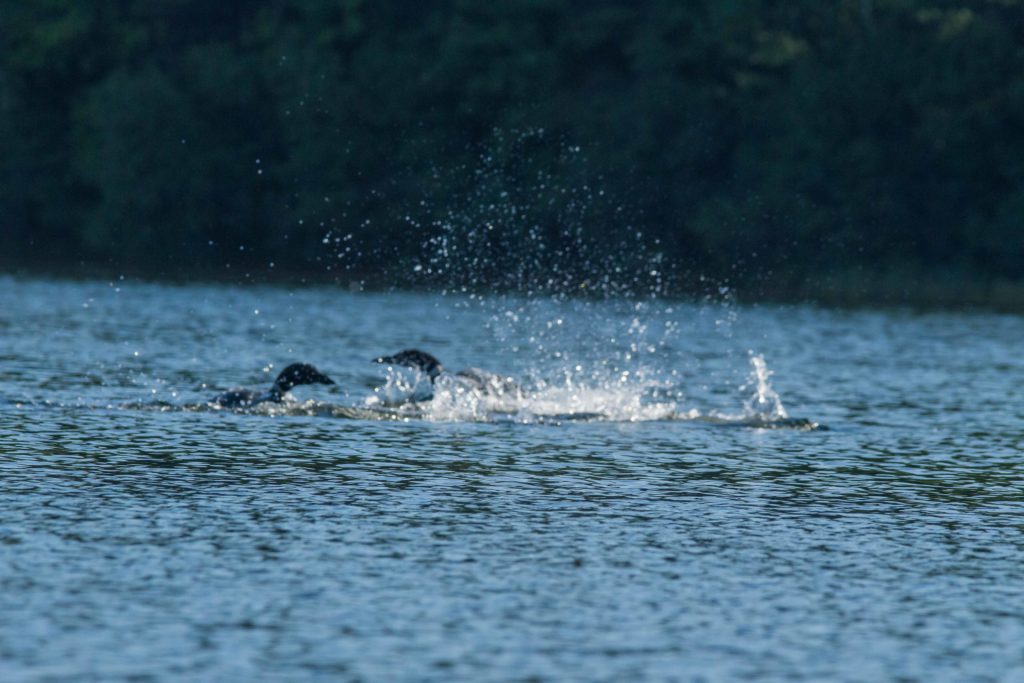
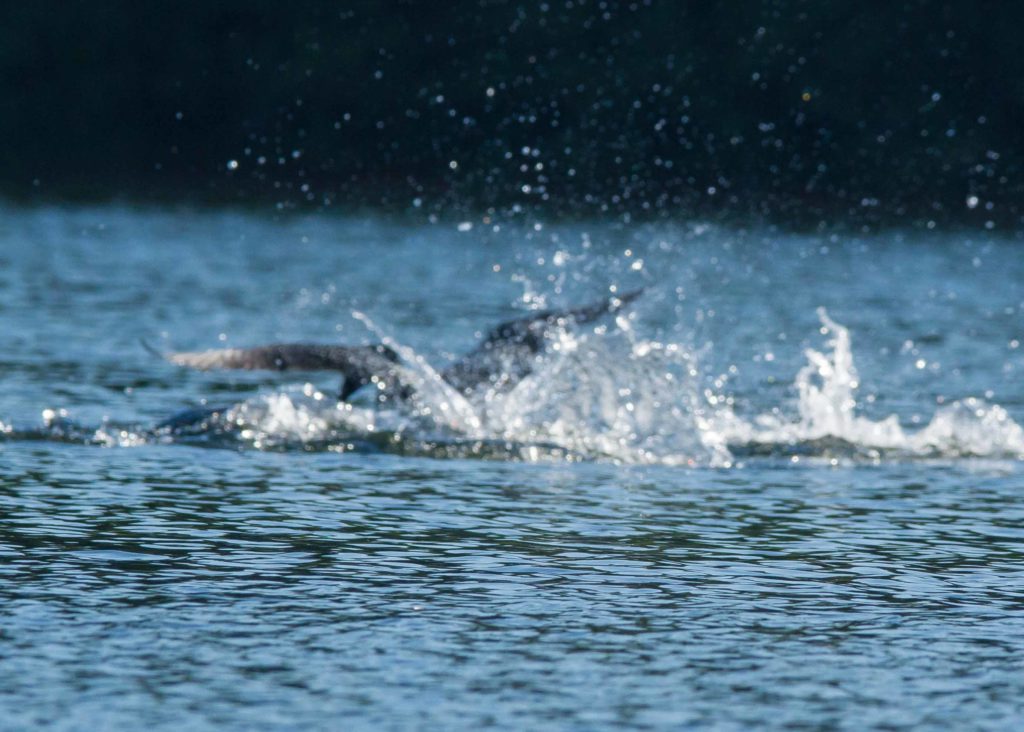
Finally, the third adult got the message it wasn’t welcome. It ran across the water and took flight . . .
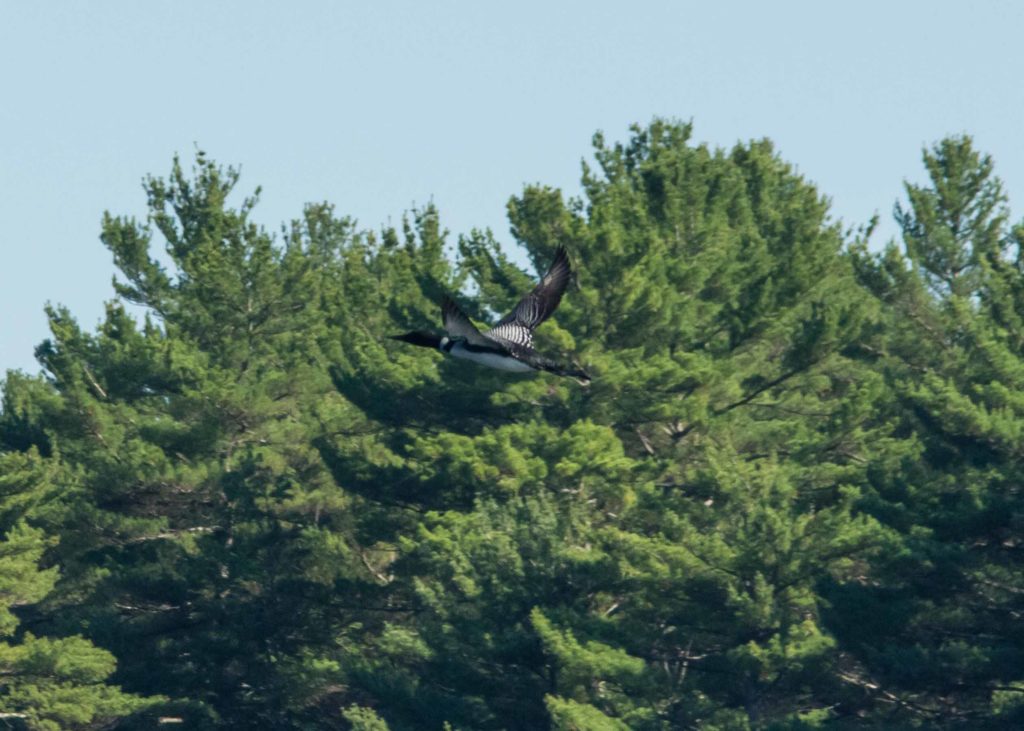
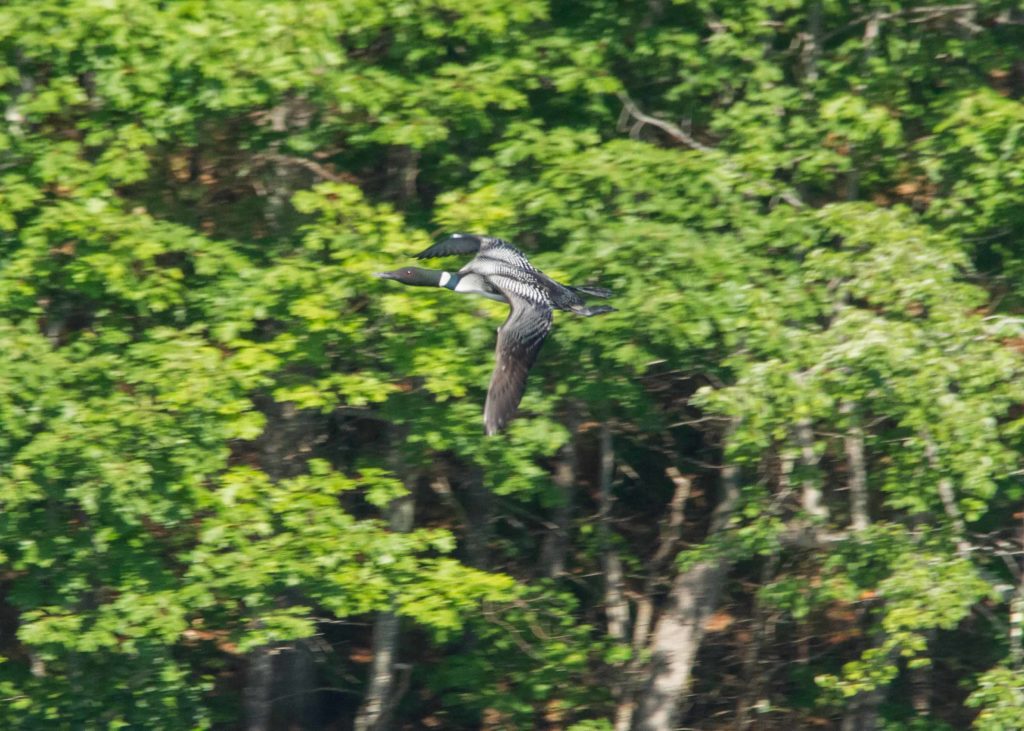
Our loon took one last look at the departing visitor . . .
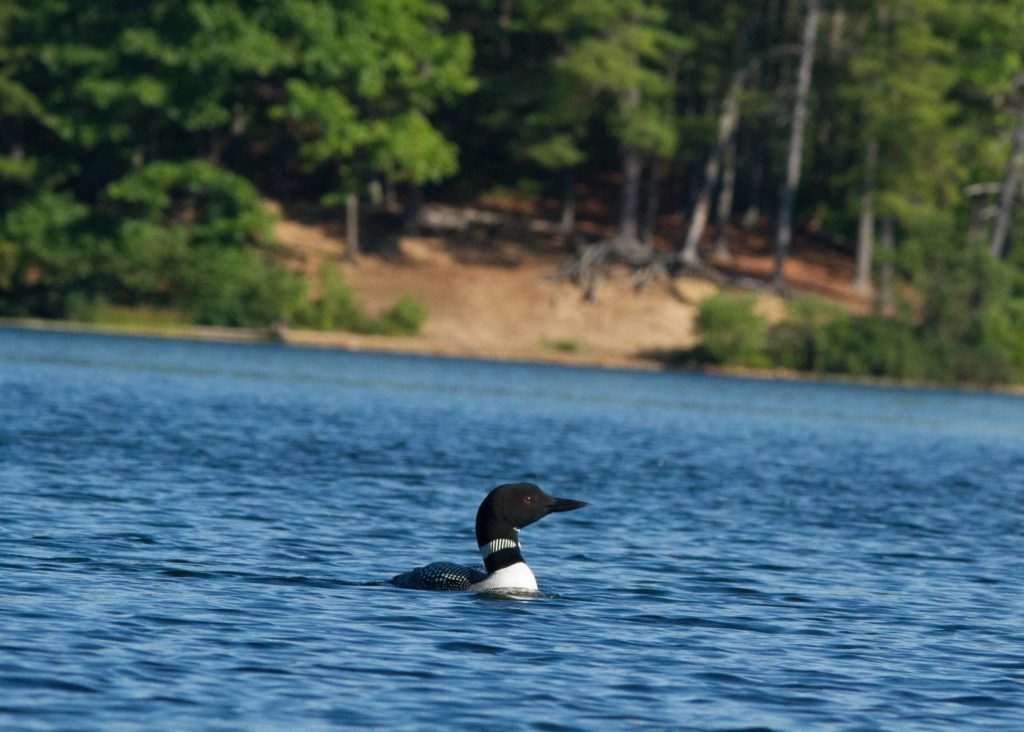
and returned to the chick who’d been waiting all alone by our dock.
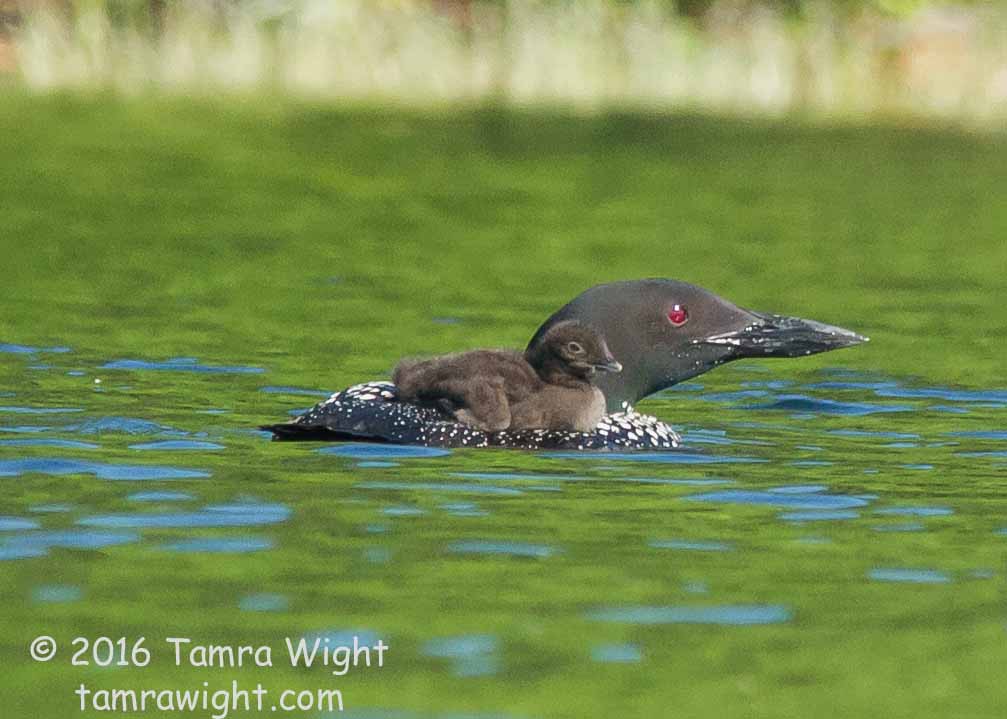
The poor little thing was so worn out from all the excitement!
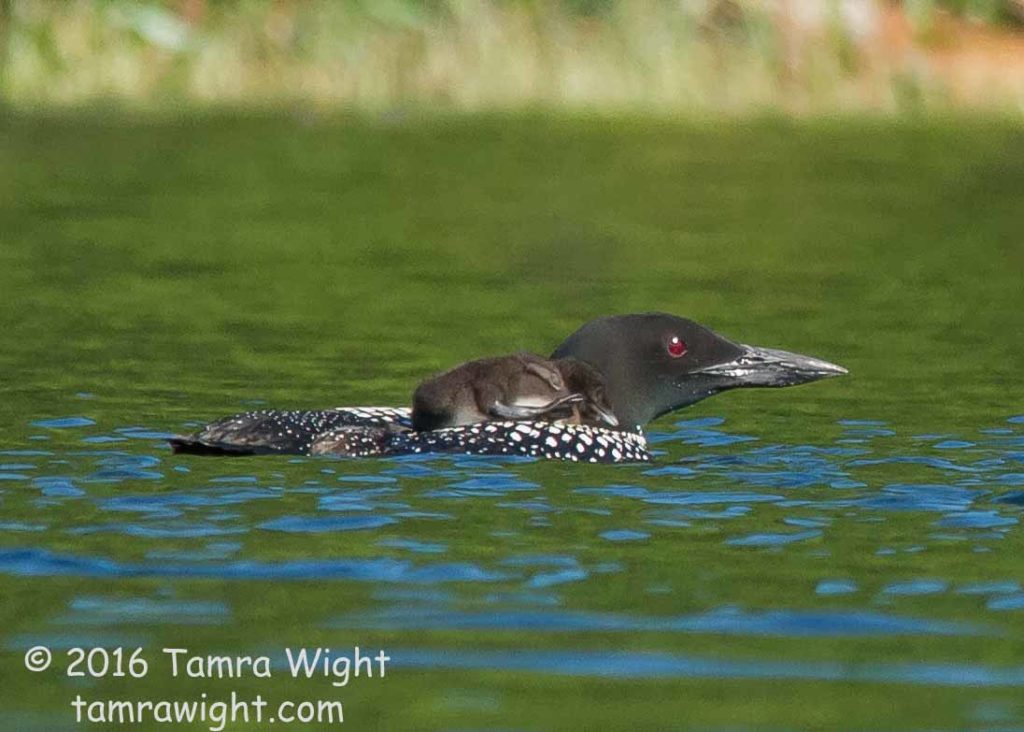
Just when I thought the wild ruckus was over, the visiting loon circled over the adult and the chick again!

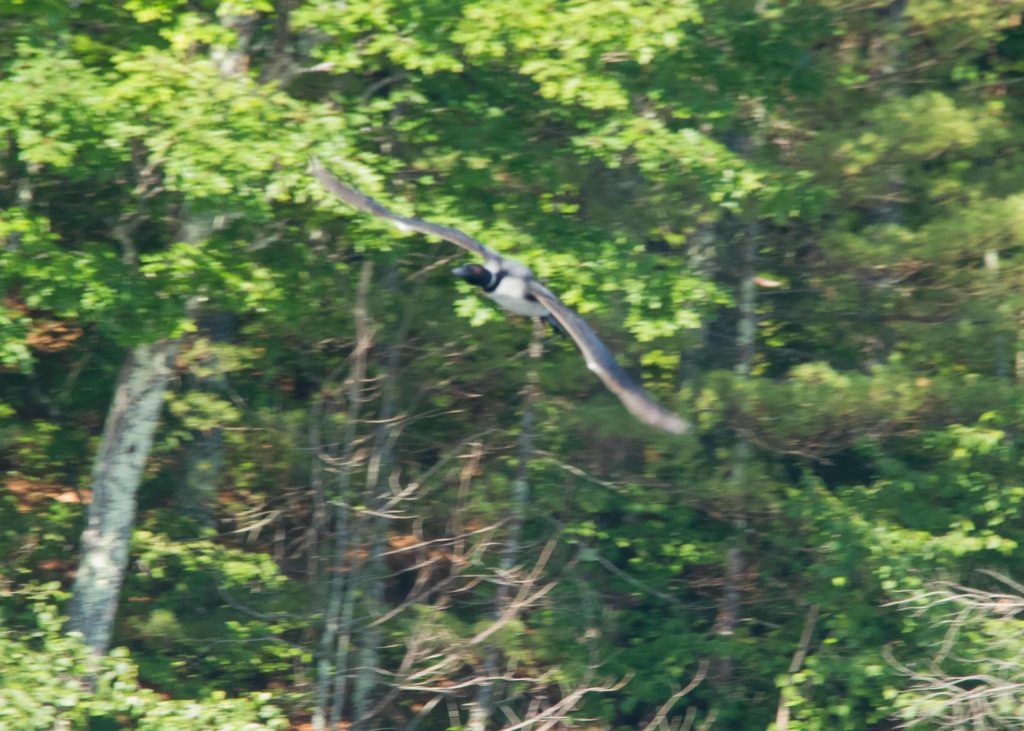
It called as it buzzed them before taking off for the lake next door.
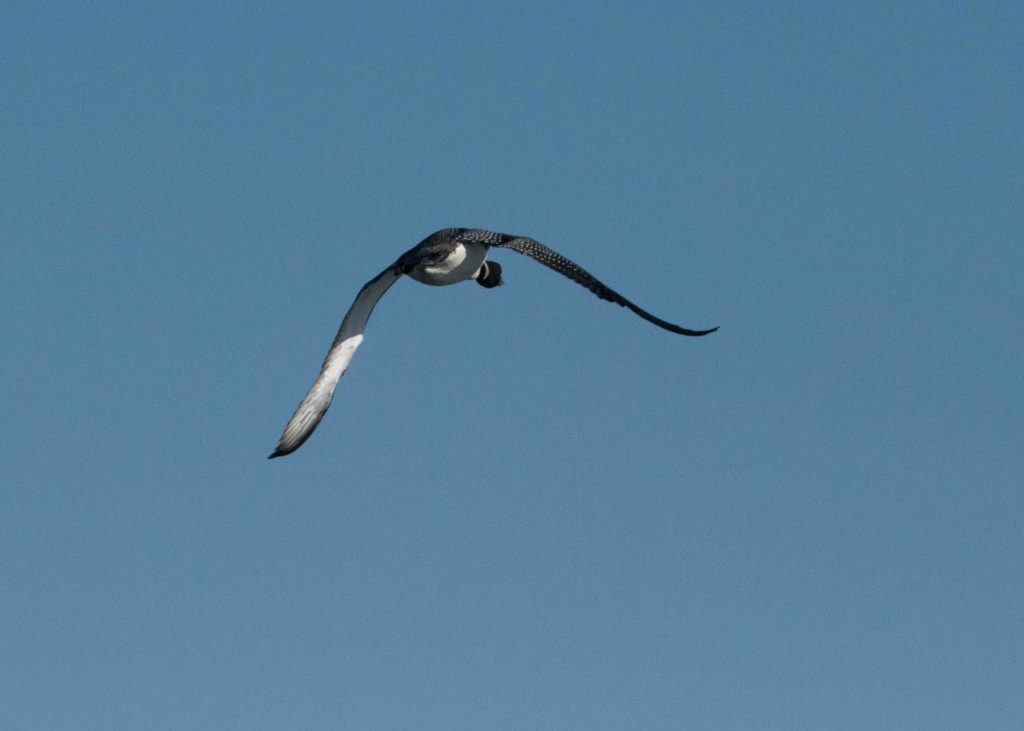
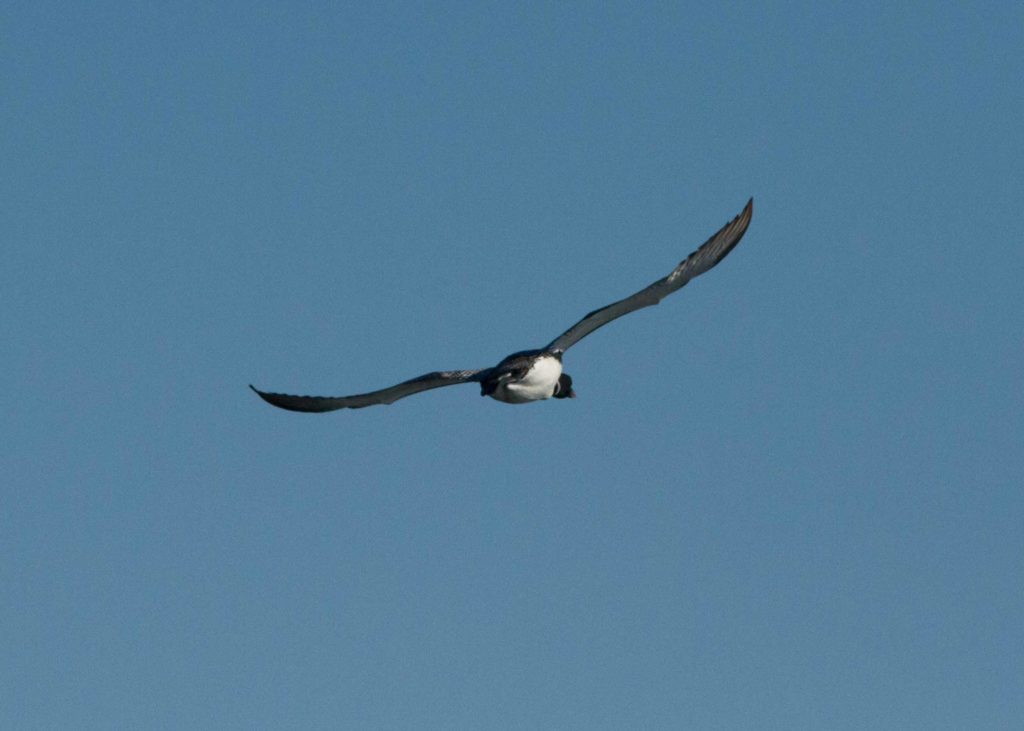
Whew! That was close. I’ve read about how loons will attack the chicks of other loons. I didn’t want to lose this little one.
I paddled home with the image below in my heart. I said a little prayer I would find it safe and sound and a little bigger, when came to visit again.
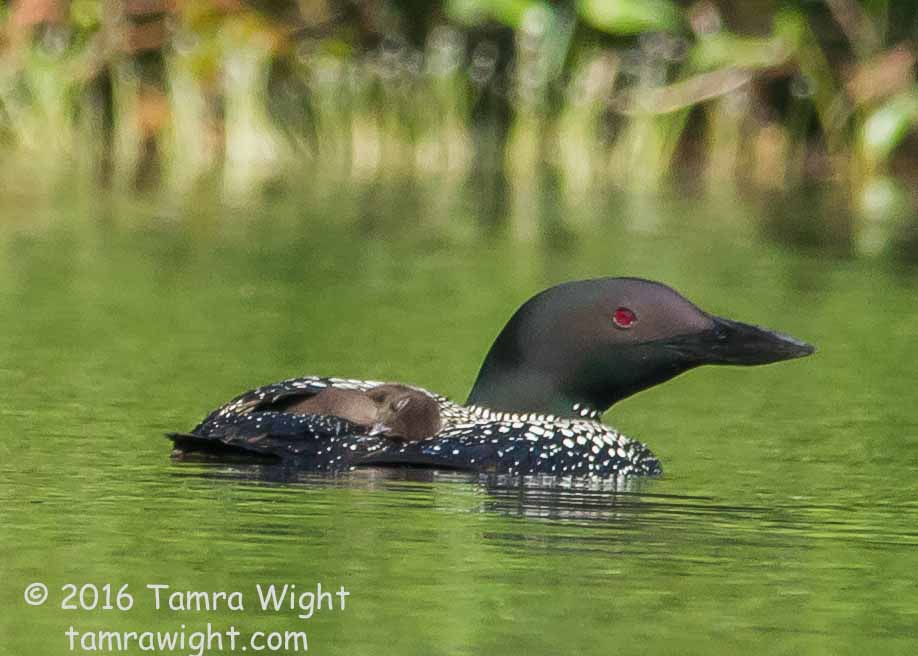
Note: Teachers, please feel free to use these blog posts in your lesson plans for Cooper and Packrat’s first adventure; Mystery on Pine Lake. From this point on, my observations could be the observations of Cooper, Packrat and Roy after the final pages of the story.
Next: The Loon Chick Grows
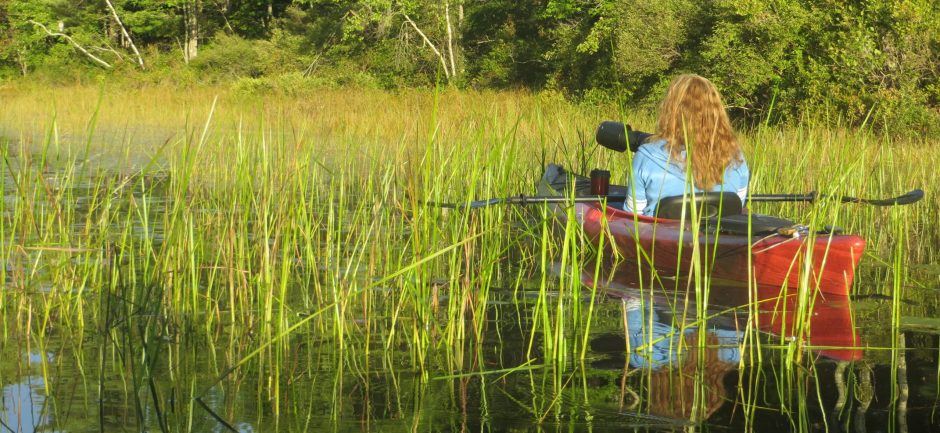
Thank you Tamra, for this fascinating, beautiful tale of the unwelcome visitor! We have enjoyed every photo, wishing we were there with you on the lake.
Karen & the team at Letterpress Books.
Thank you all so much for saying so! I’m glad you enjoyed the photos and the story behind them 🙂
Wow, your photos blow me away! I have no idea how you get these shots. I watch and photograph loons every summer at our camp in Dedham but have never come close to any of your photos. I am dismayed by the lack of reproductive success at our lake. Have found un-hatched eggs and dead chicks on our lake’s floating nest platform in recent years. Also, we have 1-2 eagles around and lots of snapping turtles which must be causing some mortality (a friend witnessed a snapper trying to pull an adult under).
Thank you, Rich! I have a very long lens, 500mm, that I’ve been learning to use to a few years now. I also believe going out at first light, made a huge difference in the photos. The lake is calmer. The loons weren’t as skittish, and because I went out four mornings a week, I came to know where they might be feeding.
I can sympathize with having loons who can’t seem to have surviving chicks, we’ve had many of the same problems and observations in the last few years. Take heart . . .perhaps your loons will do well next summer.